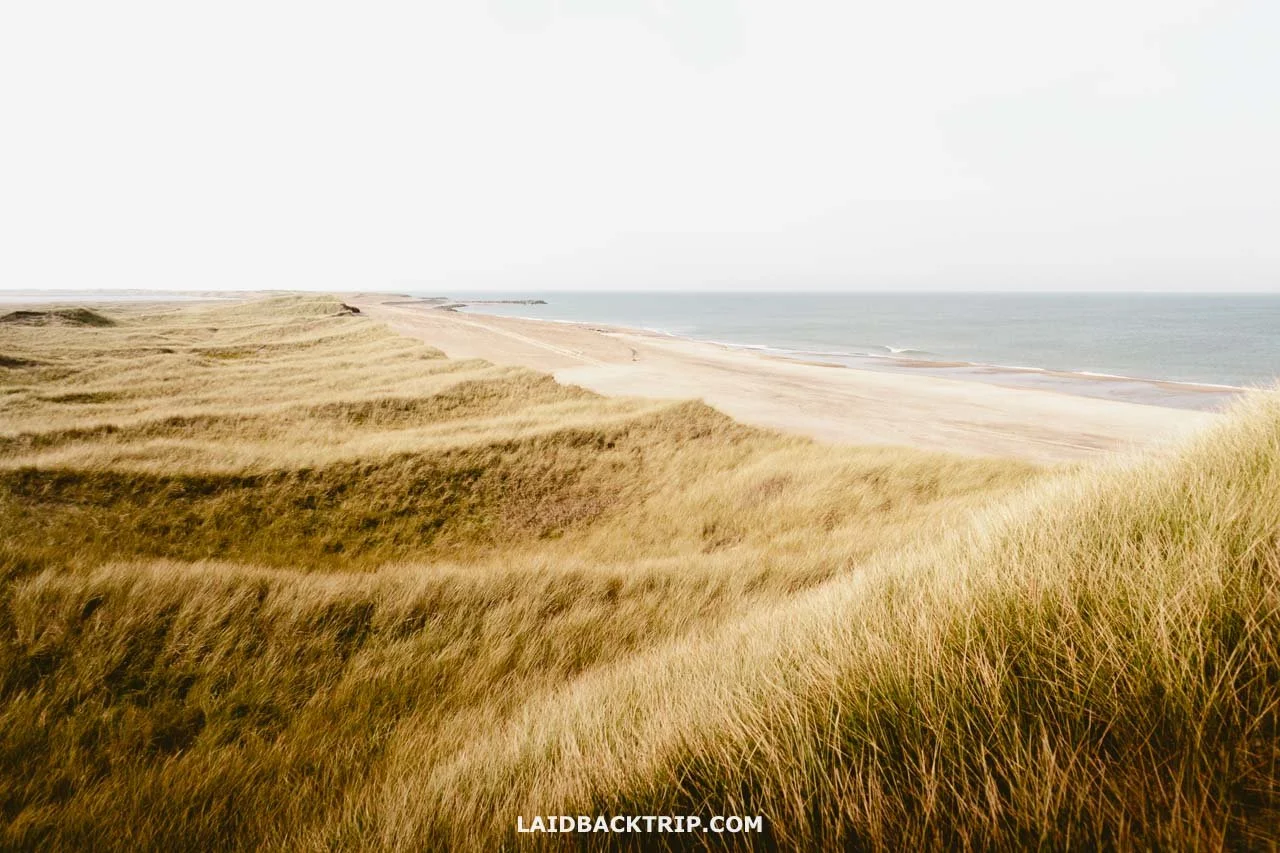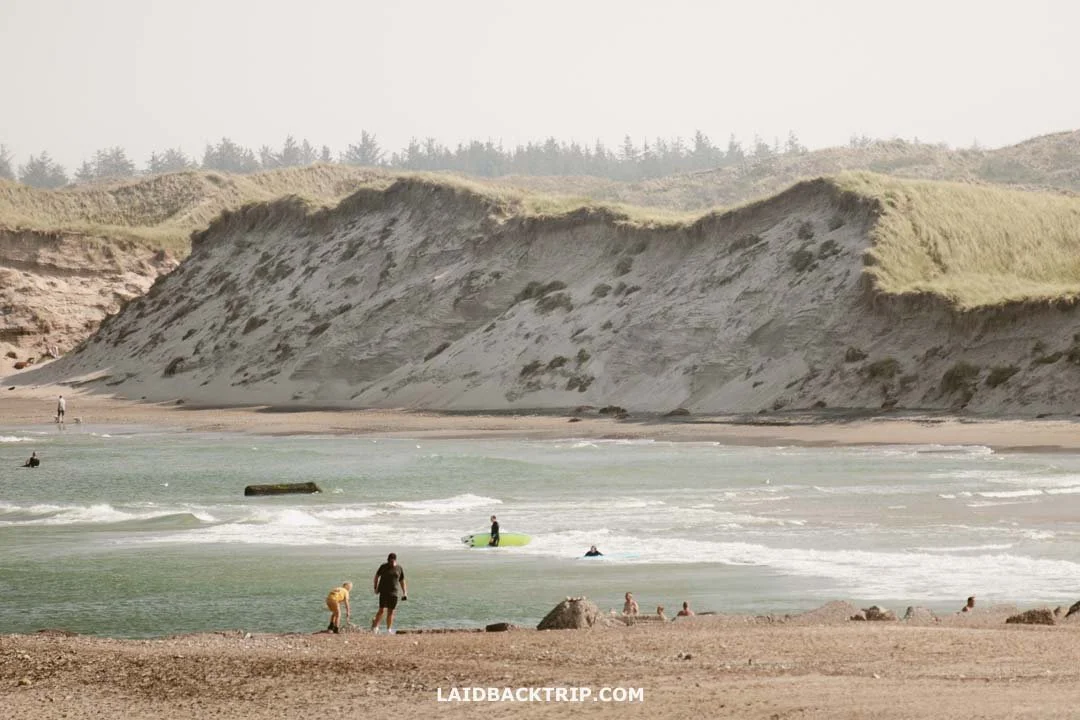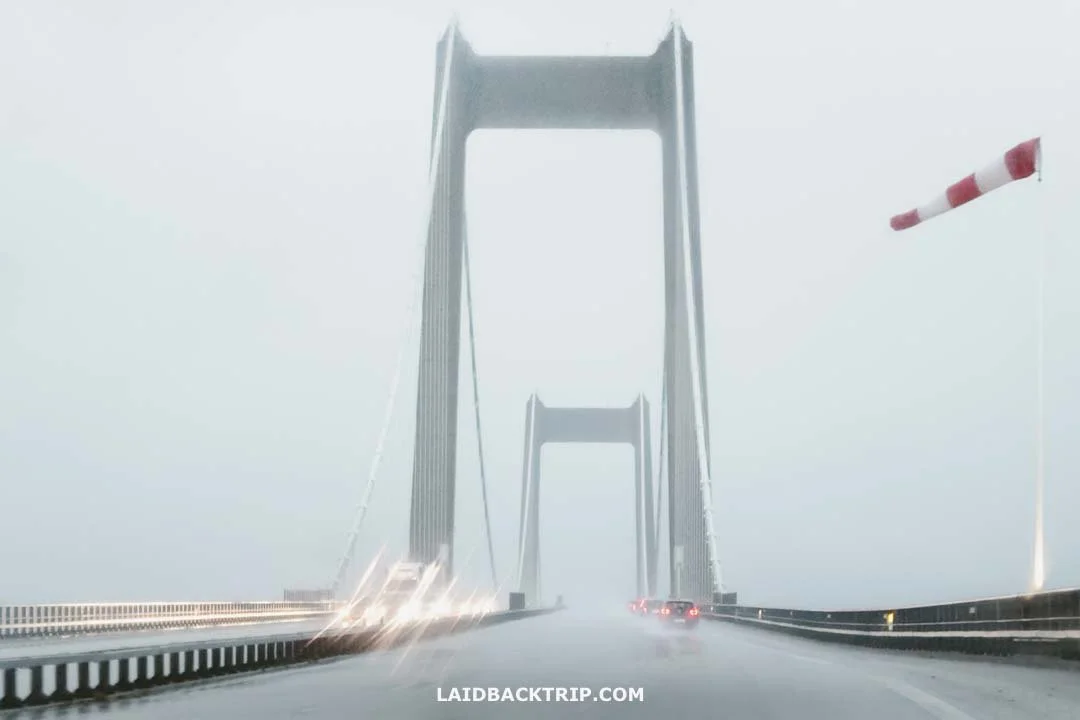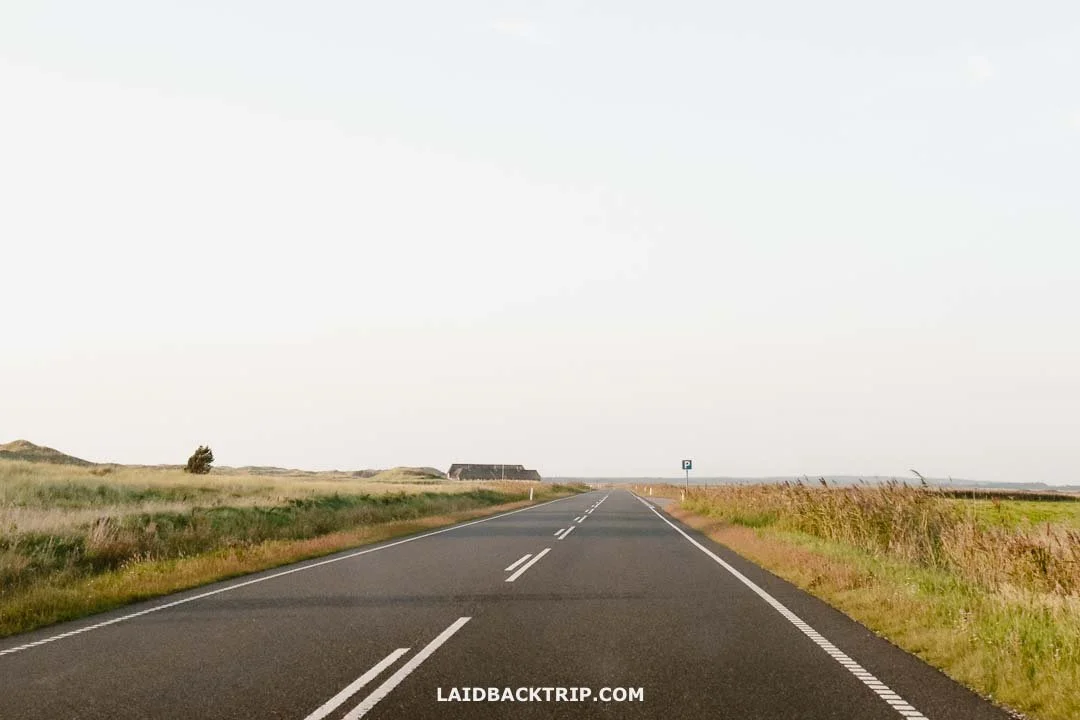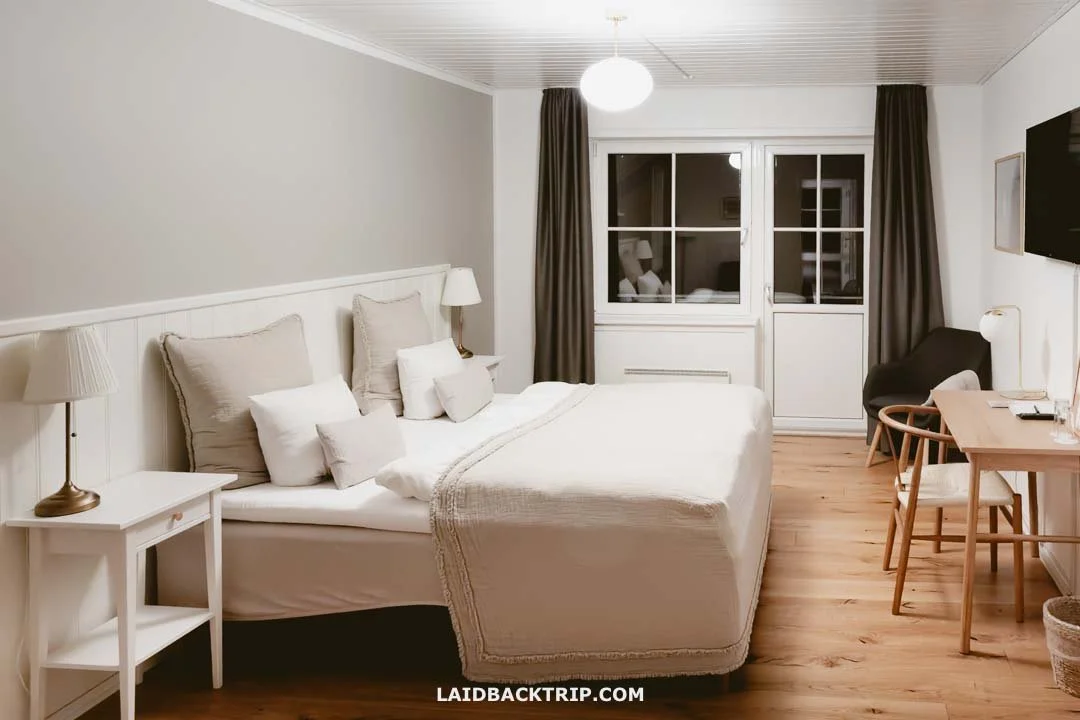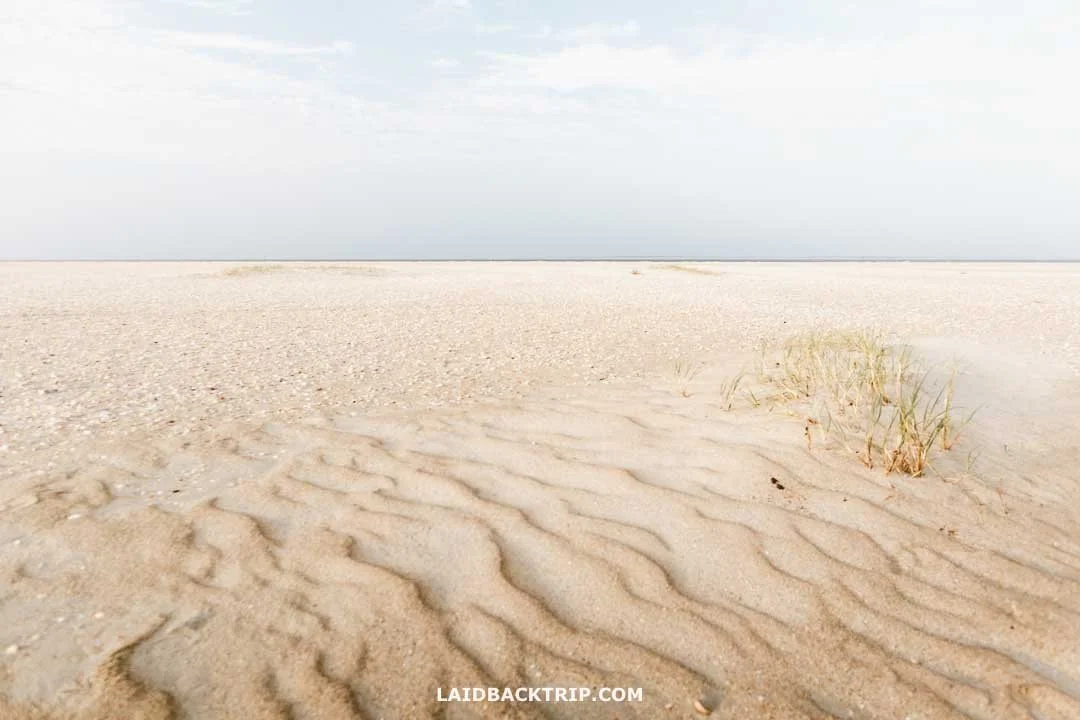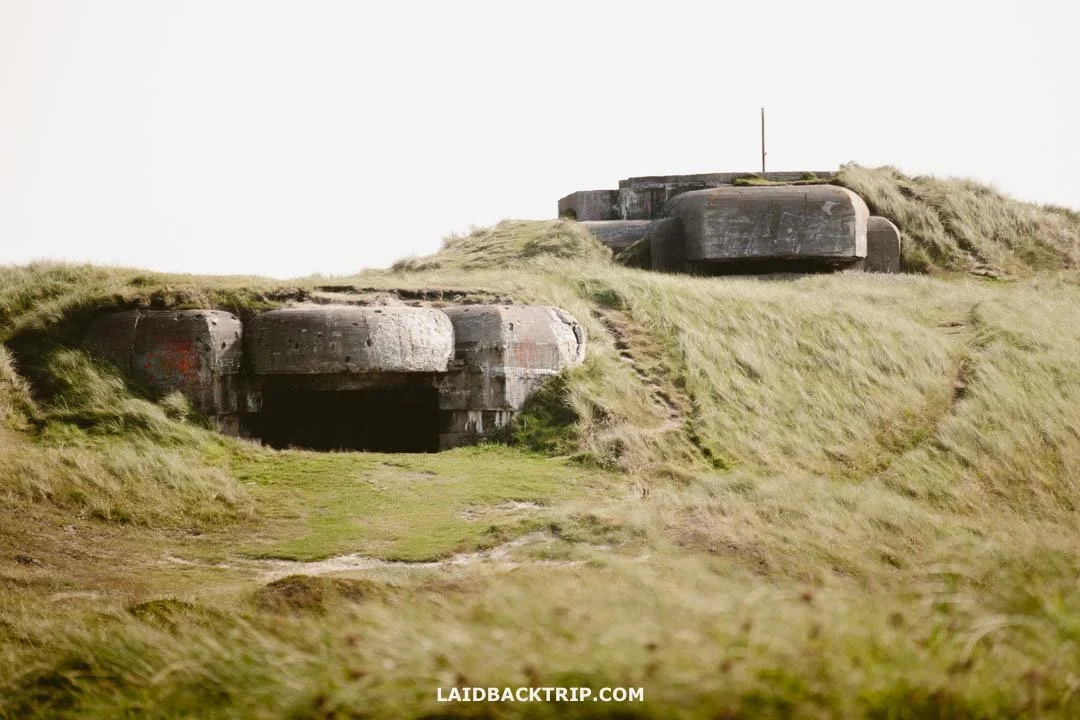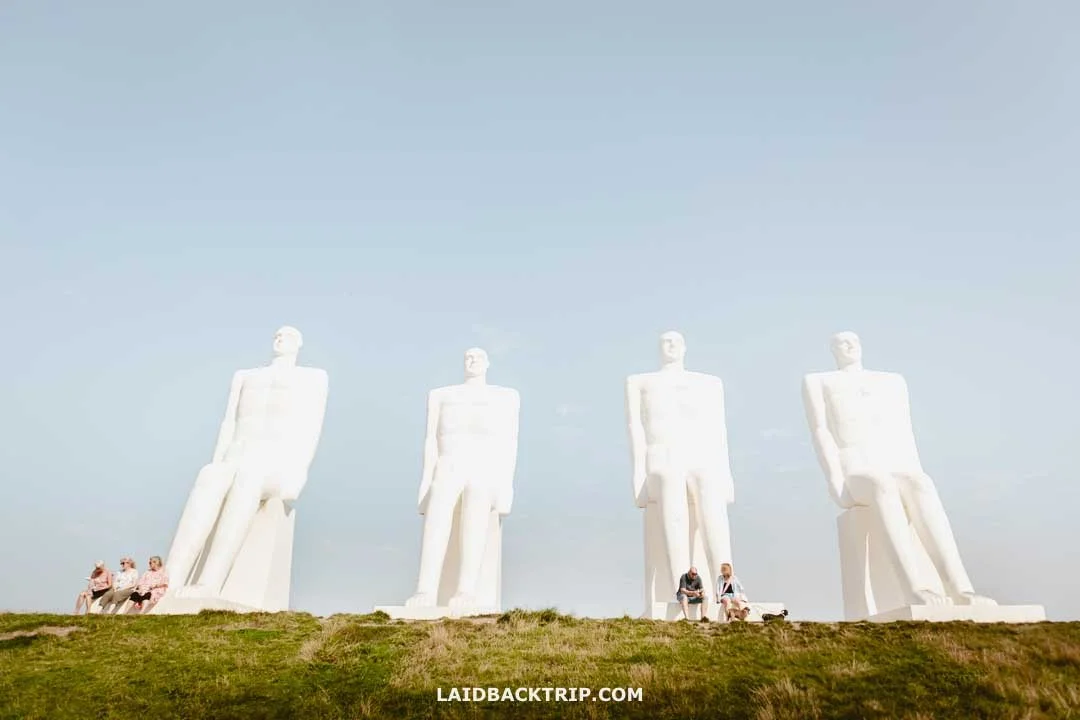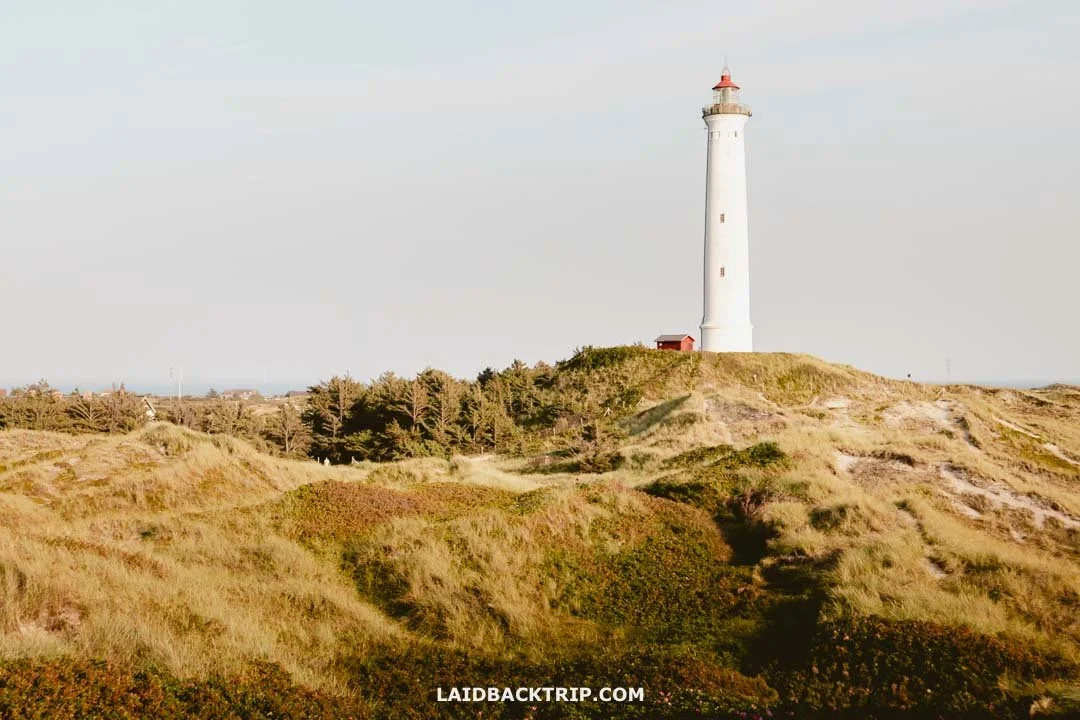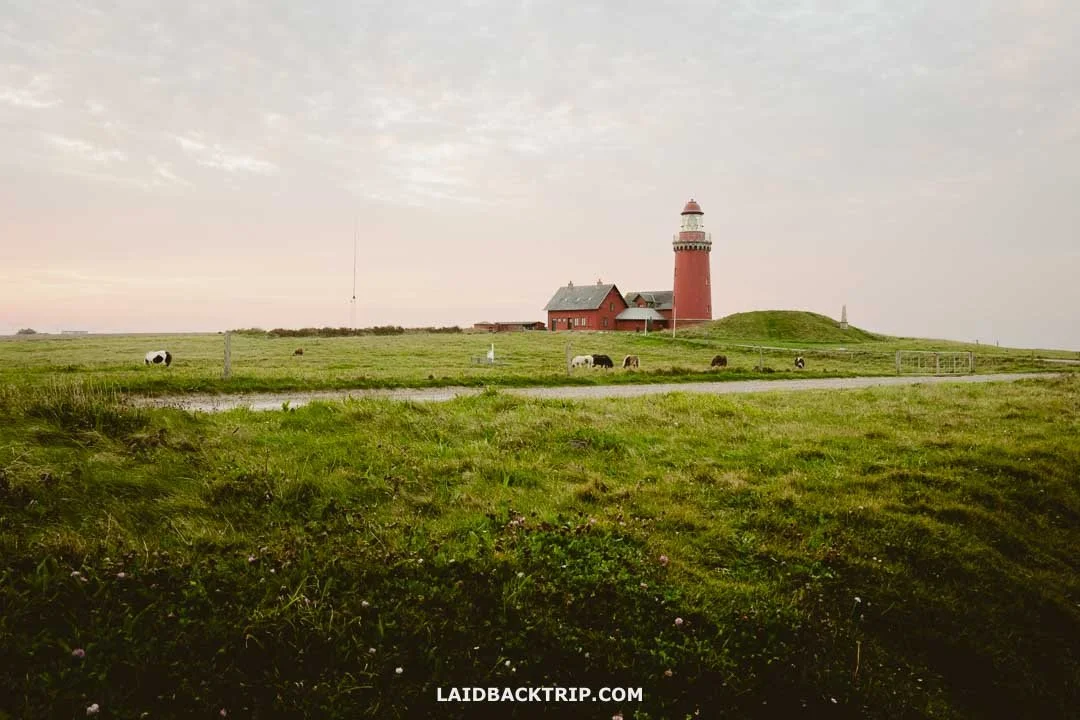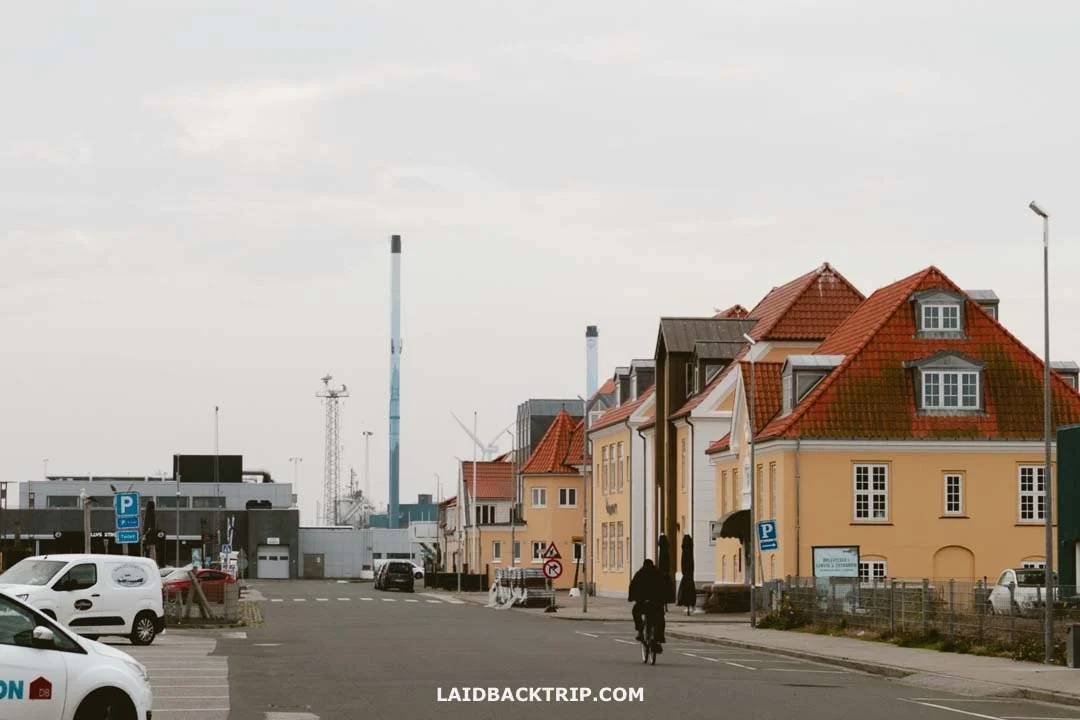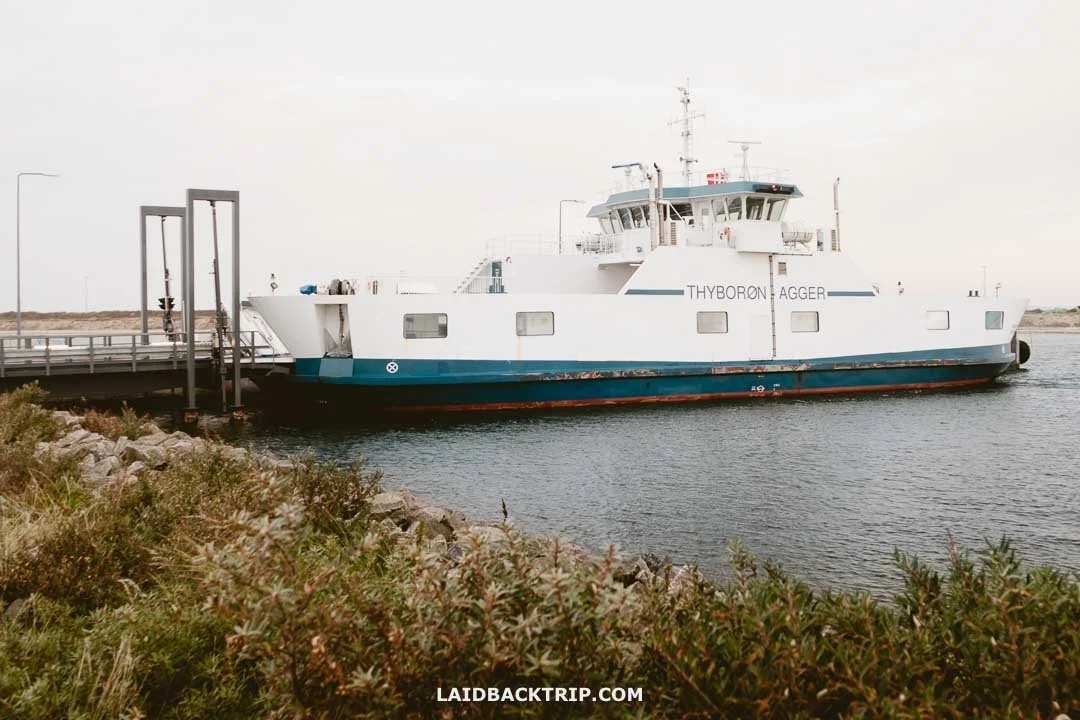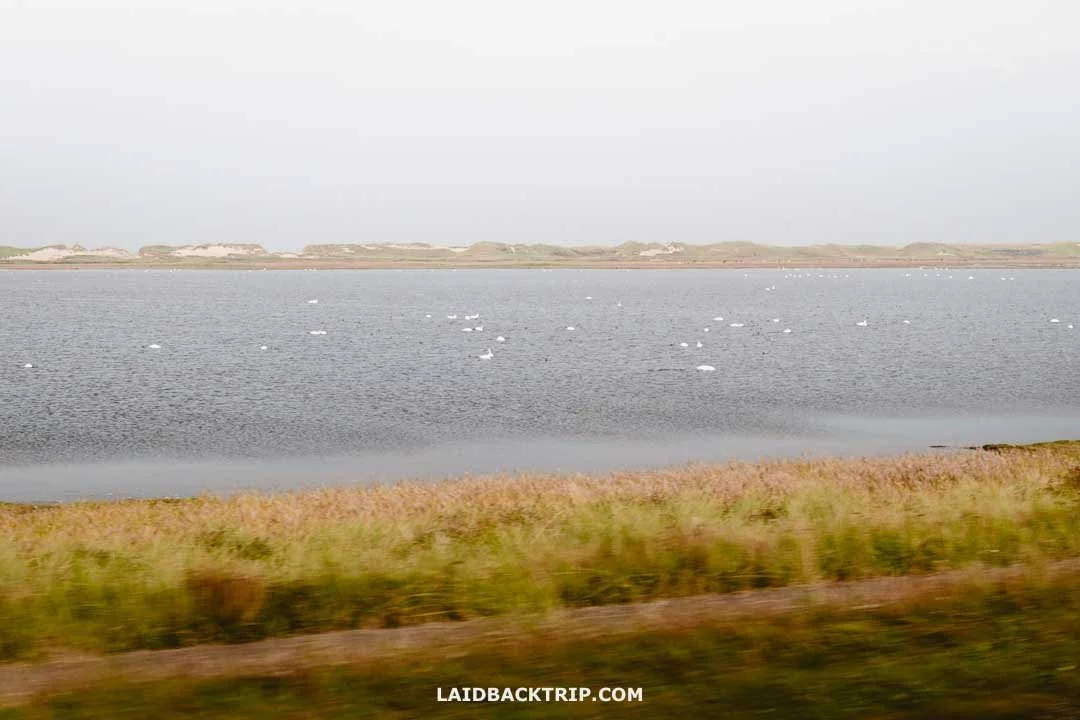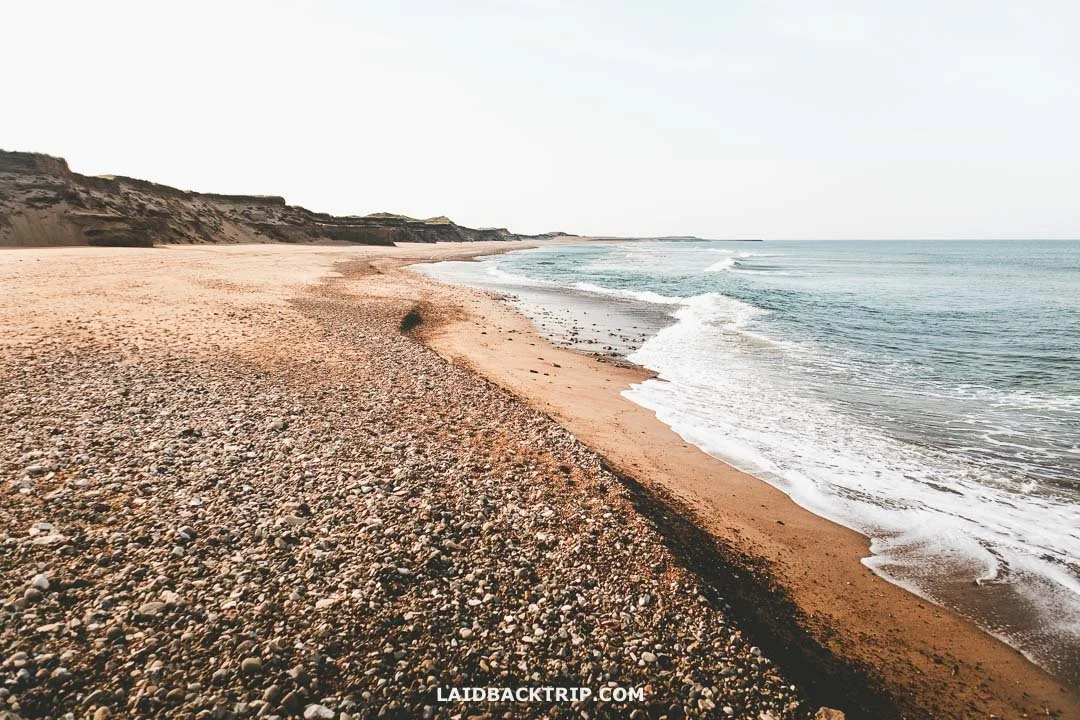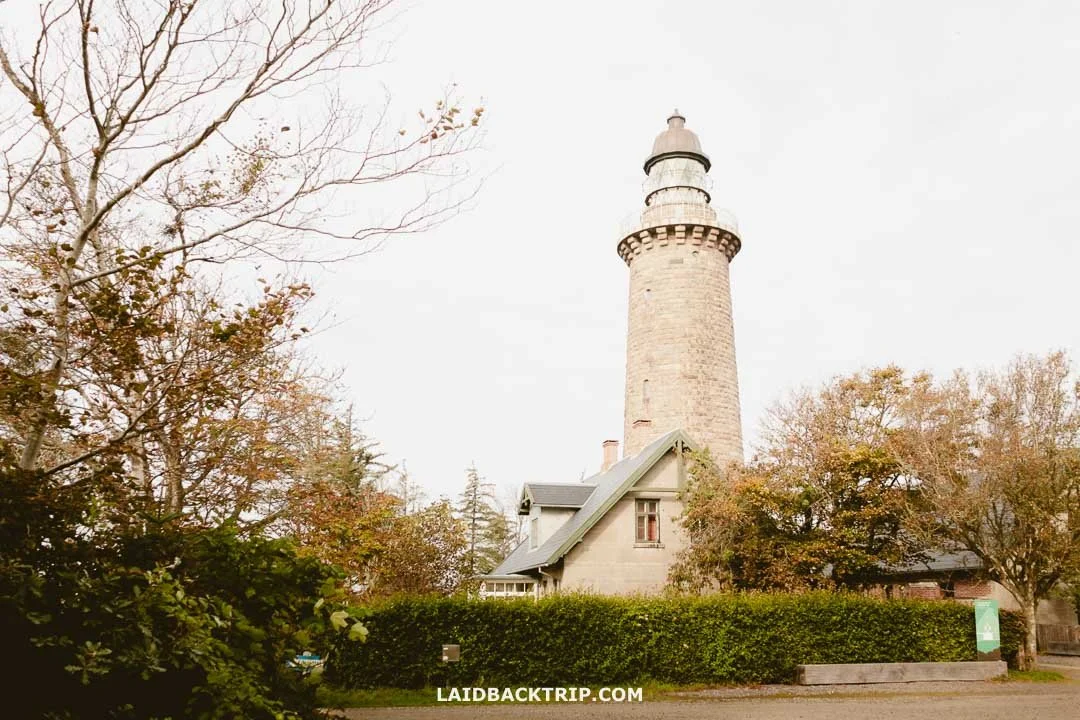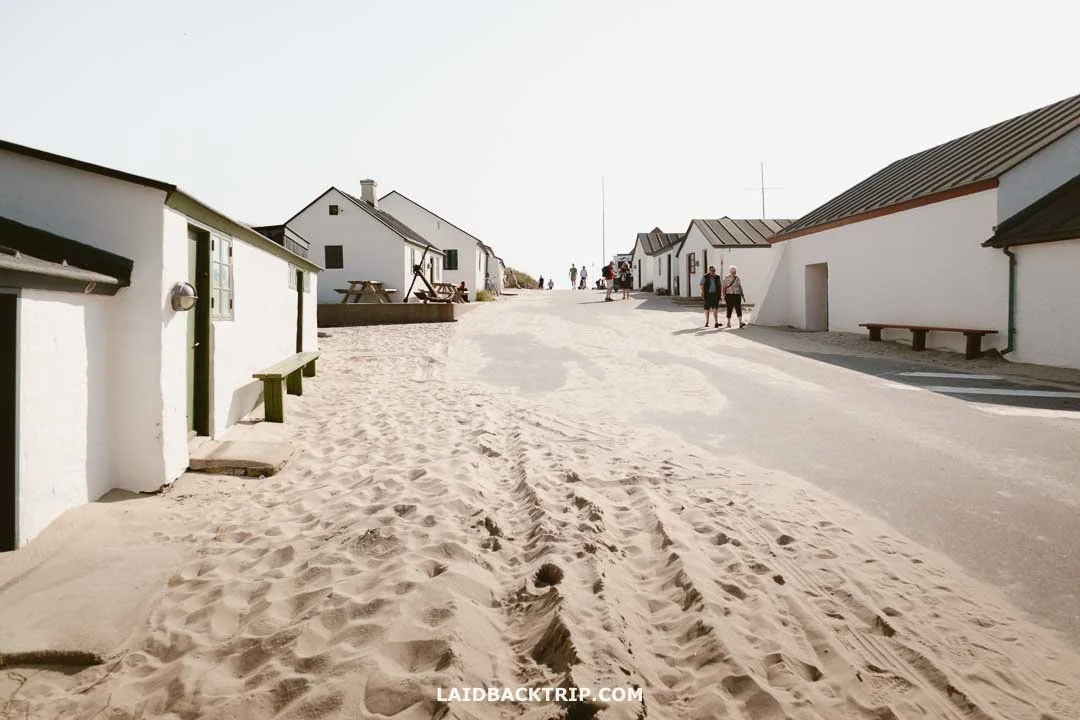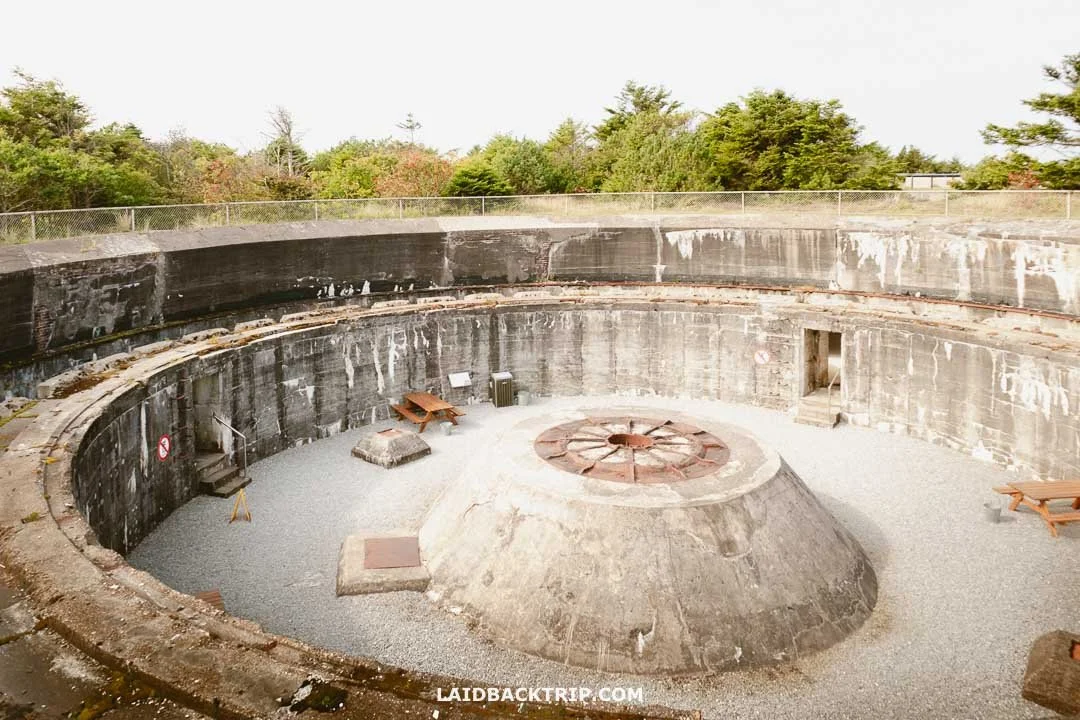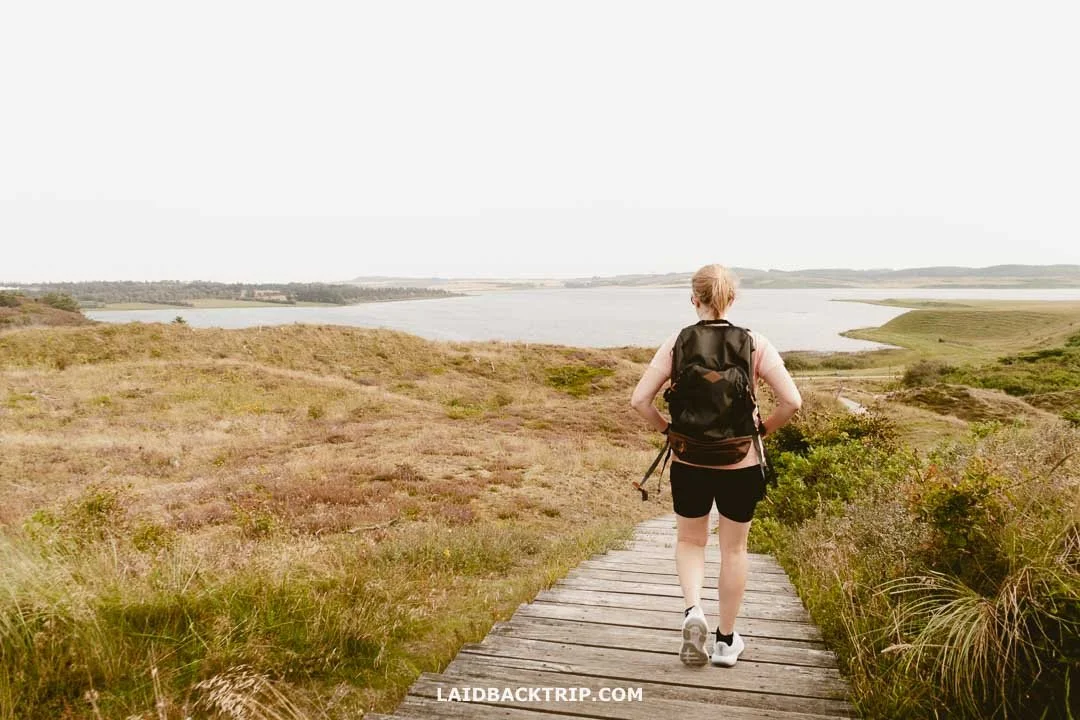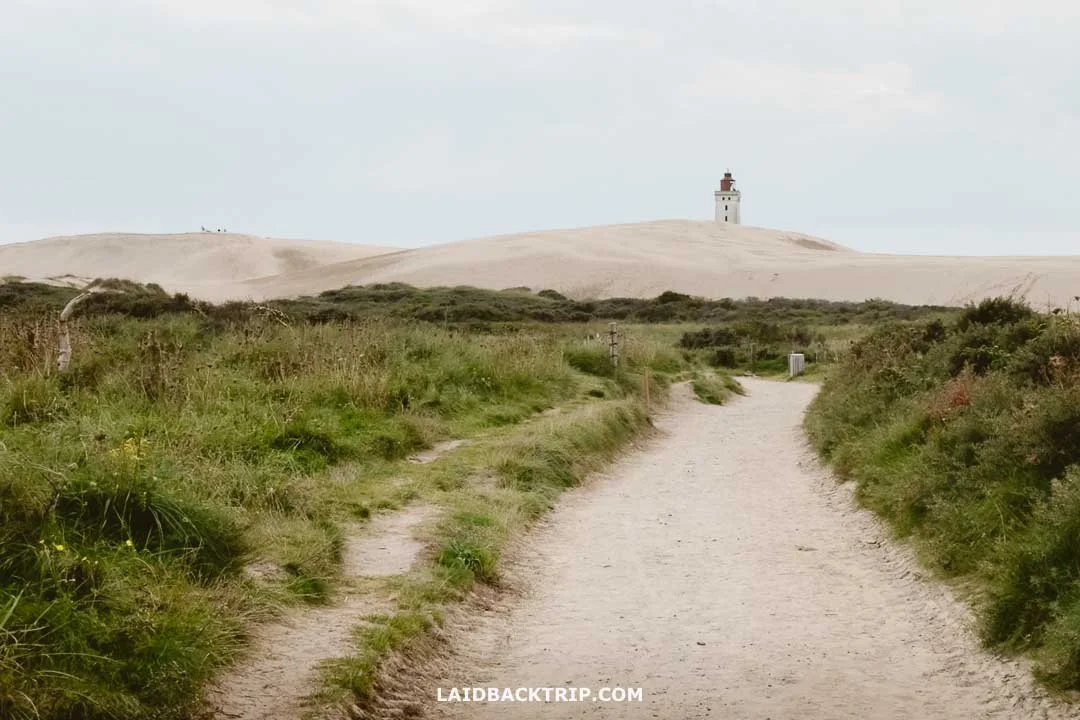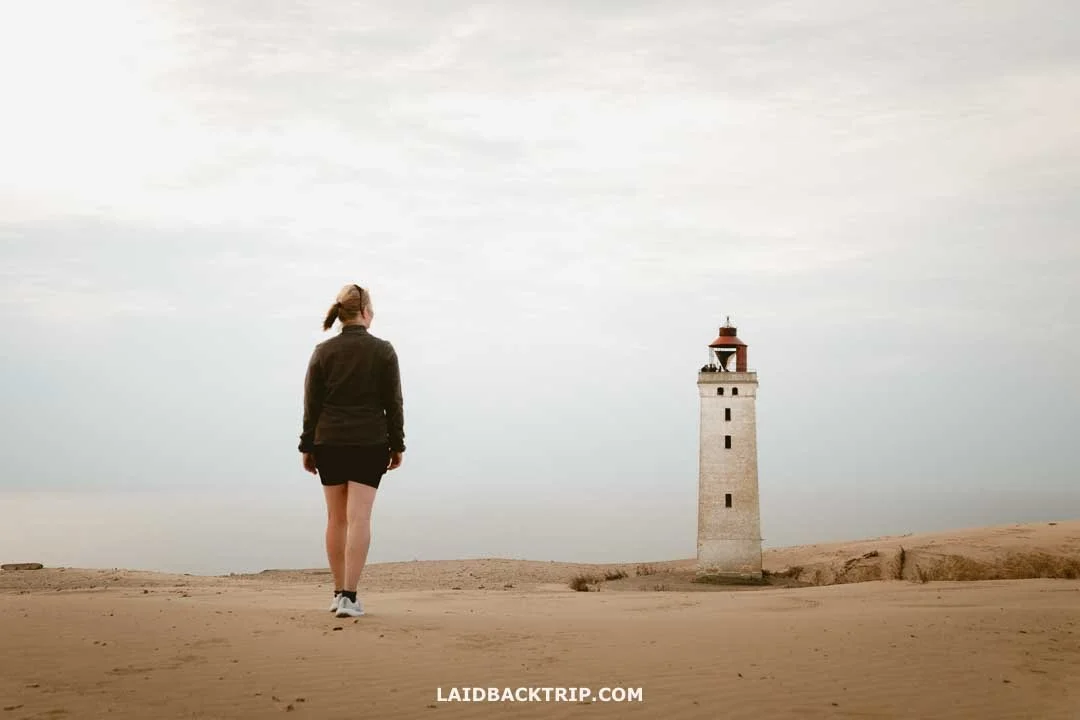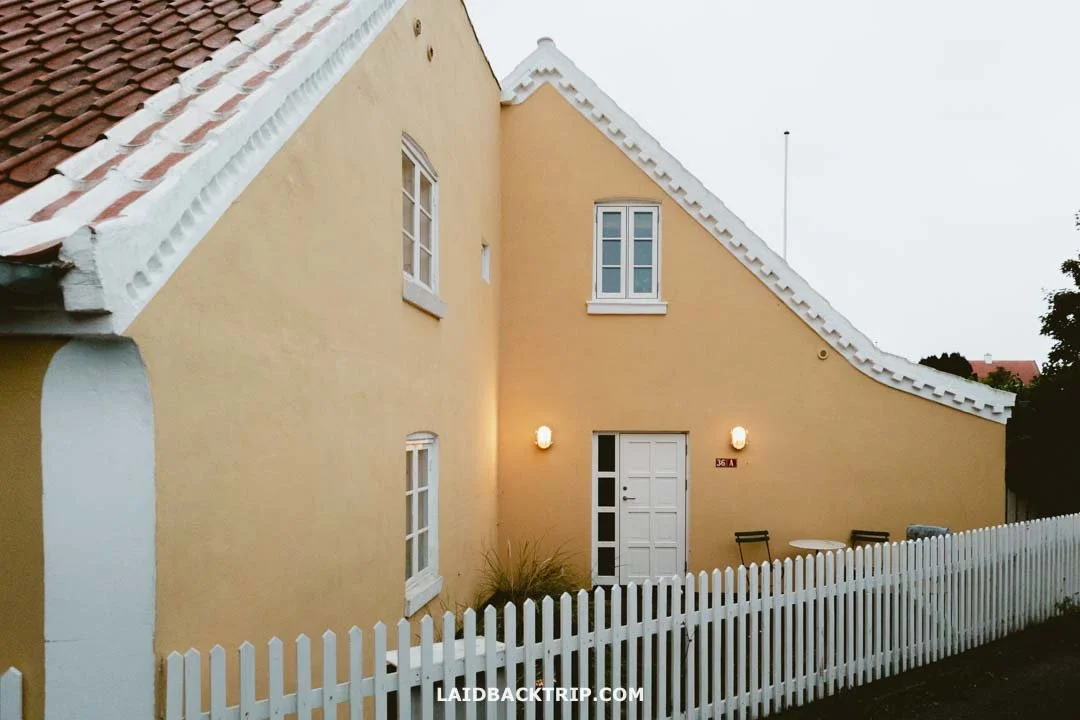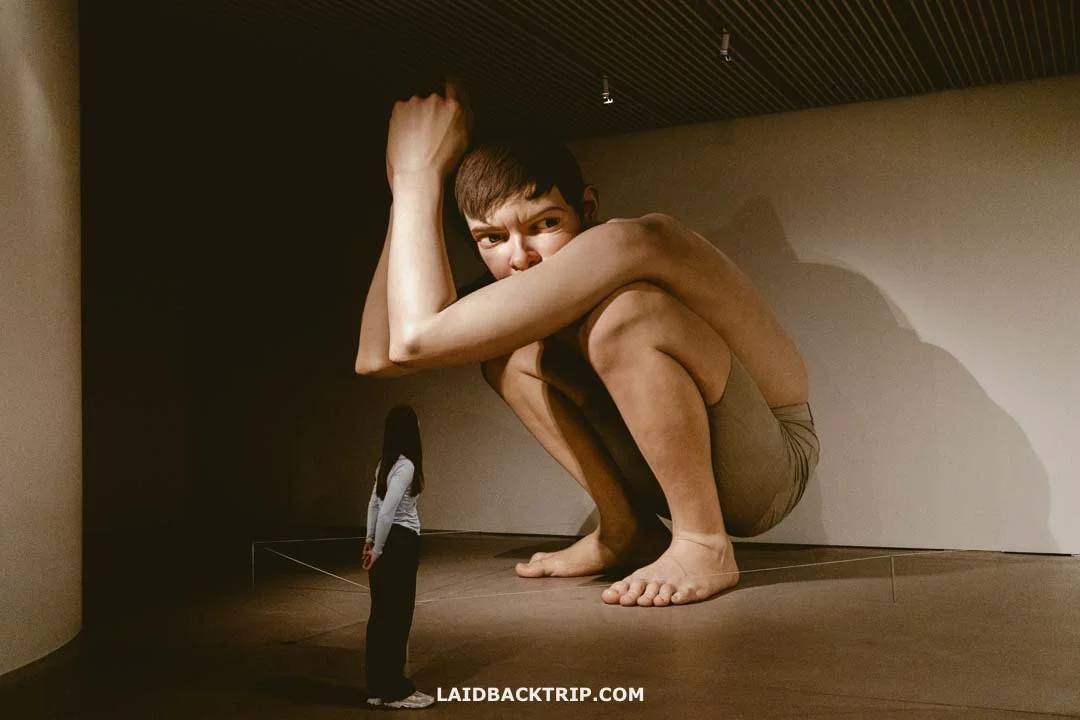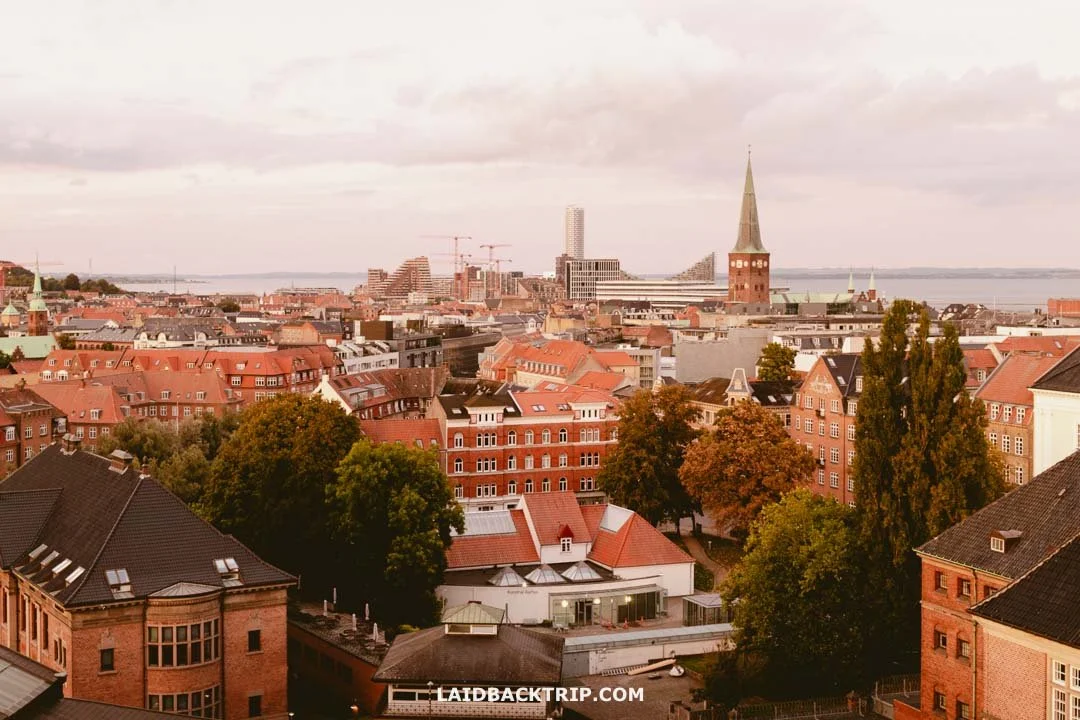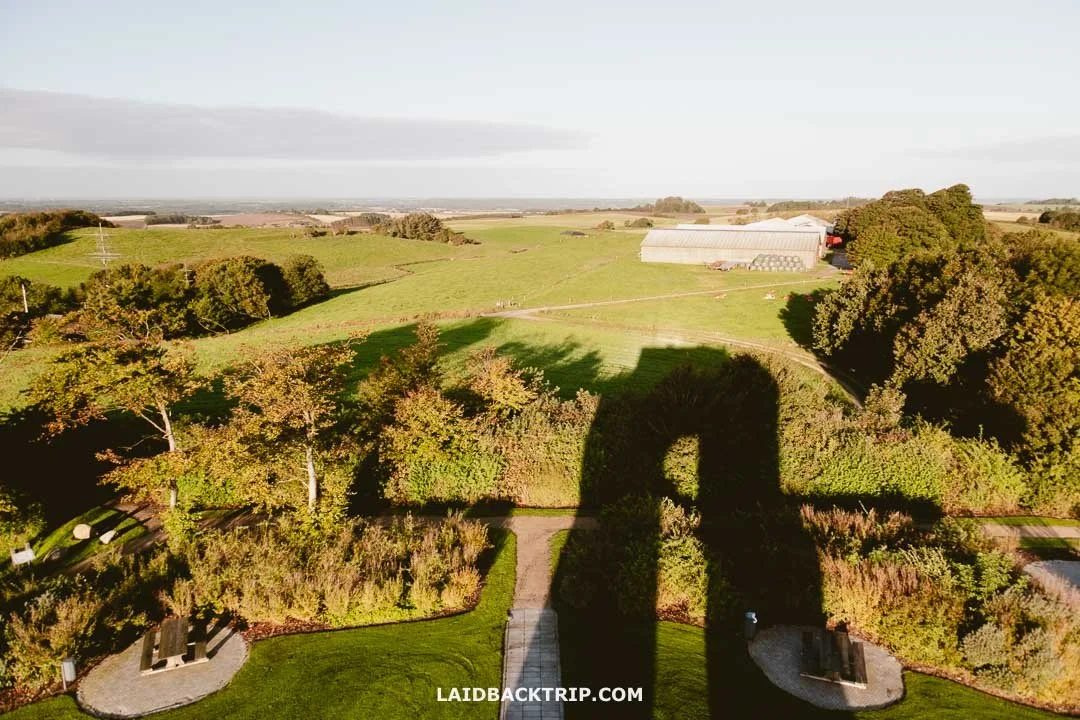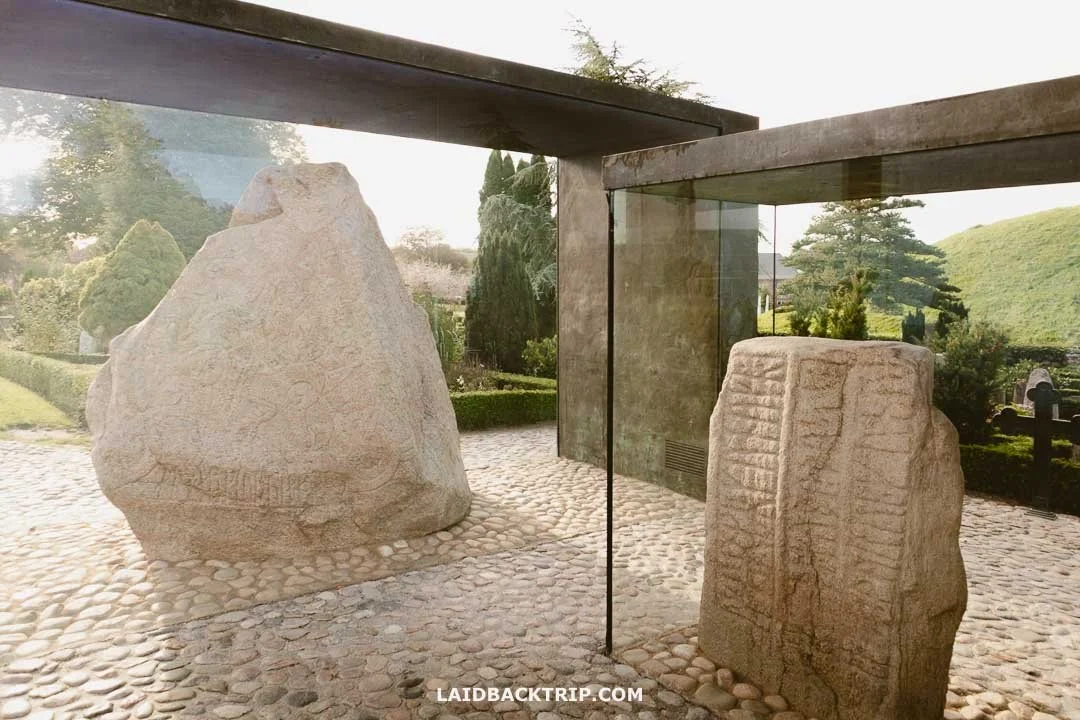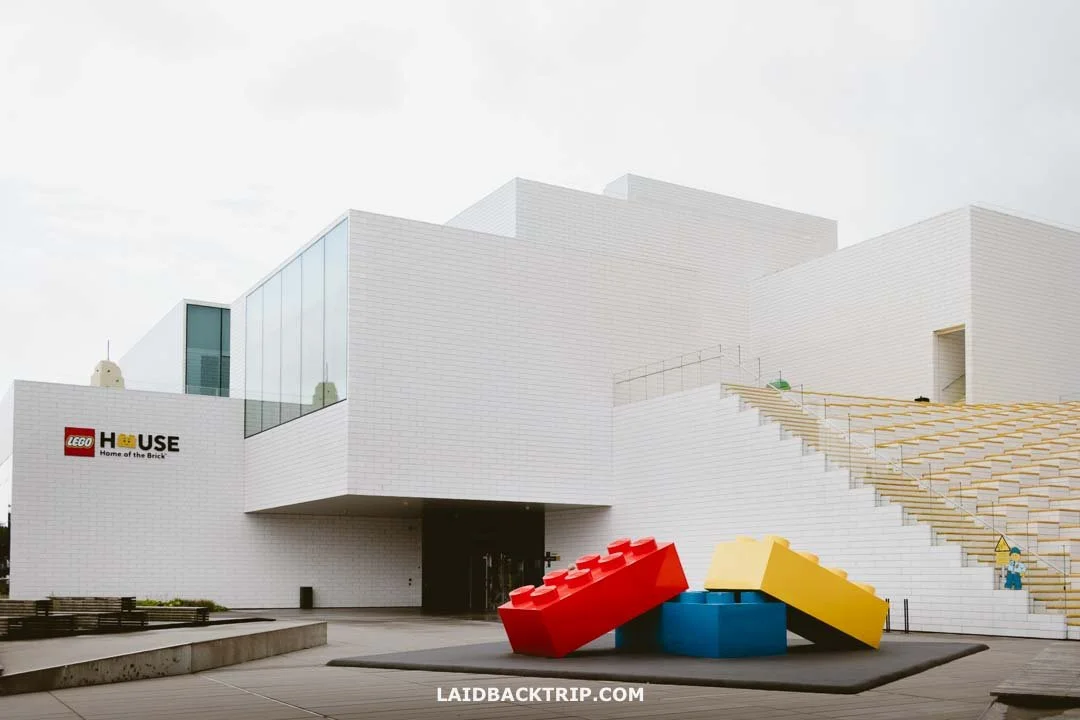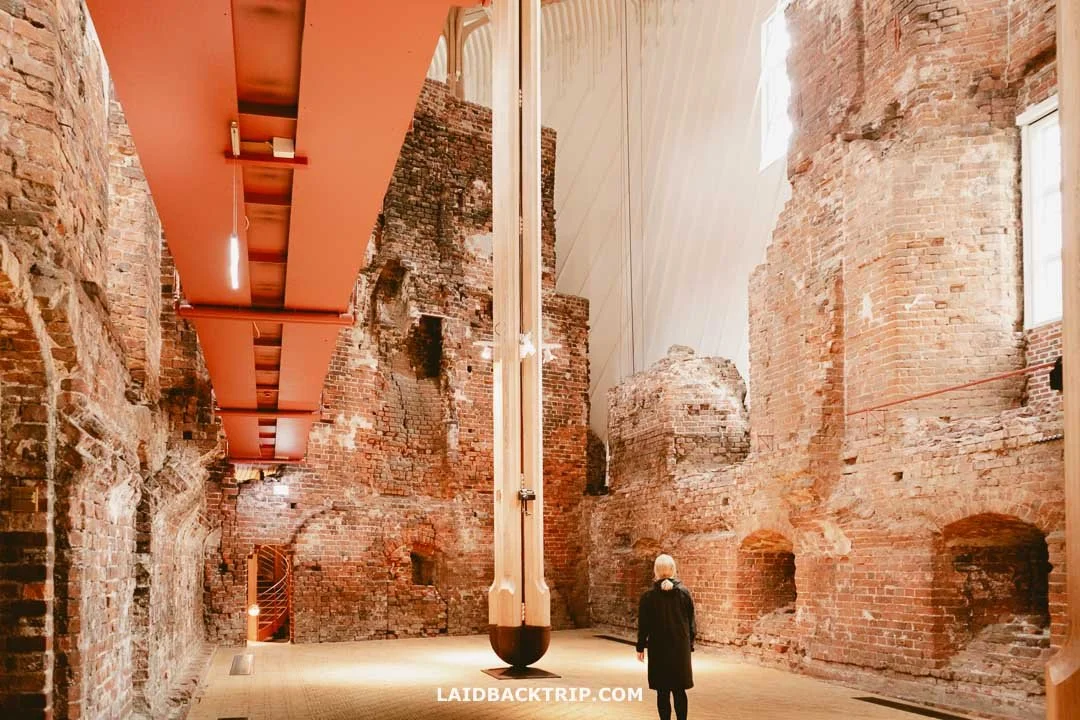Our Jutland Guide: 5-Day Itinerary + Top Sights
We think Jutland offers one of Europe's most stunning coastlines.
Jutland was truly magical, and easily the highlight of our whole trip to Denmark.
With endless beaches stretching for miles and miles, and grass-covered sand dunes, the windswept coast of Jutland quickly became our favorite part of Denmark. Before the trip, Lucie and I both had a feeling this peninsula would be a hidden gem among European road trips, but we still kept our expectations in check. We didn't want to jinx it.
Over recent years, we've taken plenty of road trips across Europe, including some really amazing ones like the Ring Road or the Wild Atlantic Way. But Jutland felt so different. Jutland was simple, almost enchanting. It was like stepping back into calmer times. And while driving north, we just wished the road would stretch on forever and we'd never reach Skagen.
And while the rugged coastline was absolutely stunning, it was not the only thing to see here, because Jutland is also filled with WW2 sites, as it was an important part of the Wild Atlantic Wall. Beyond that era, there is also plenty of Viking history, and if old times are not your thing, or you come with kids, you can always visit Lego's hometown, Billund.
Right from the start, I have to admit that Jutland is definitely not for everyone. While we enjoyed the sand, beaches, cliffs, dunes, and even mudflats, we cannot deny that the scenery can get a little repetitive after some time. Jutland's landscape is super flat, which we expected, since we knew that Denmark's highest point is only 170 meters asl, coincidentally located on this peninsula.
Still, it was something we fully grasped only after spending a few days there. Even the Jutland fjords look flat (yeah, forget Westfjords). But that never bothered us. We simply enjoyed the ride. Hopefully, you will enjoy it with us through this 15,000+ word-long Jutland guide too!
Sand, coastline, North Sea. This is Jutland.
Planning a Trip to Jutland
Because we aim to keep this guide as practical as we can, there are some essentials you should know about Jutland first, and we are going to cover them here before anything else. We hope this general section will give you a quick introduction, which we think is key to understanding a bit more about this region.
Next, we will get into the planning section, where we will point out Jutland's must-sees as well as some off-the-beaten-path places we enjoyed and think are worth checking out, too. So let's dive into it!
What is Jutland
So, Jutland is a peninsula in the western part of Denmark. To the south, it borders Germany, which connects it to the European mainland. To the east, it is linked by Lillebæltsbroen to Funen island, which is then connected by the Great Belt Bridge to Zealand island, home to Copenhagen, the capital.
The first image that pops into my head when I think of Jutland is the long beaches, shifting sands, grass-topped dunes, heathlands, and crashing North Sea waves. But we also encountered rolling hills, glacial lakes, fjords, and forests. The peninsula was primarily filled with villages and small settlements amid farmlands. Yet, we also explored a few bigger towns and cities that contrasted with the calming, but untamed, coastal landscape.
One of the most classic views of Jutland.
Interestingly, we always thought Jutland was just a peninsula. But after extreme natural events in 1825, we learned on the trip that it is technically split into the Jutland Peninsula and the North Jutlandic Island. And yes, the upper part really is a true island!
We came across this fun fact when we took a ferry over the Limfjord that separates the two landmasses as we drove north. But you do not actually need to take ferries if you do not want to, since the sections are also linked by a number of bridges. For instance, we used the one in Aalborg on the drive back south.
Getting to Jutland
Now that we've covered the geography lesson, let's tackle the most basic question we also asked ourselves: how do you actually get to Jutland? There are three main ways to reach Jutland. The first is just driving over from Germany. Being from Czechia, that's the route we chose.
The other most likely would include a journey to Jutland from Copenhagen, simply because this is the capital with the largest international airport in the country, which makes it pretty much the first place most international tourists arrive at.
We crossed Lillebæltsbroen on our way from Jutland to Funen.
Given that it's a long drive from Prague to Jutland, we also thought about flying into Copenhagen, but then decided we wanted this little adventure to be a full road trip, so we skipped that option, even though it might have been slightly faster.
If you're based in Europe, you can also check if your city has flights to Billund Airport. Prague didn't when we checked, but we noticed that Paris, Frankfurt, Amsterdam, Munich, and others did, so that's actually a pretty good option. Even if you're flying from overseas, this could also be worth considering since all these cities are easily reached from around the world.
Another option is to take a ferry to Frederikshavn from Gothenburg and Oslo, though we think this would be relevant for only a few people attempting extensive road trips through the Nordic countries.
Where to Start Jutland Trip
Since we were coming from Germany, it only made sense for us to start the Jutland trip in Ribe. We picked this charming town as our starting point for a few reasons (getaway to Wadden Sea NP, Sort Sol, etc.), but the main one was mostly practical. It had a few nice hotels and was the first 'tourist' town along the way.
It's true that if we had continued from A7 to E45 and stayed on it (the main motorway running south to north through Jutland), it would have taken us to Kolding, which is also fine. But again, Ribe is the main spot here in the southern part of Jutland, at least for tourists.
We chose Ribe as our starting point for the Jutland adventure.
And if we had come from Copenhagen, we'd probably have done the same, even though there would have been a few more options like Kolding, Vejle, or even Billund along the way. But again, the point is, while Ribe is a must-see, we'd put all three of these other places in the optional column, just as we did when driving from the south.
Of course, if you're flying directly into Billund Airport or planning to explore Jutland with your kids, the town of Billund is a great alternative (it's the home of LEGO, in case you're wondering why it has the big airport or why it's a good base for families).
Drive Around Jutland Clockwise or Counter-Clockwise
Since Jutland is a peninsula with roughly an oval shape, it was pretty easy for us to plan the trip as a loop. That led us to the question of which direction to start in. Given that Ribe was closer to the west coast, and we read that this side is more scenic, we decided fairly quickly to do Jutland clockwise. Honestly, we didn't put too much thought into it. Driving clockwise just felt right.
Most of the time, this was the view we were driving through.
On some other road trips we've done in the past, like the New Zealand's West Coast, this choice made a bigger difference, mostly for the views. On those scenic routes, we tried to stay closer to the sea for better views and sometimes easier access to pull-outs, but in Jutland, we didn't really notice much difference between starting on the western or eastern side.
Sure, by going clockwise, the sea was slightly further, but since there weren't any classic 'scenic drives' along cliffs like the Ring of Kerry or narrow roads like Slea Head Drive, it really wasn't that important here.
Do You Need a Car in Jutland
Well, since we road-tripped Jutland, we might be a bit biased, but plain and simple, yes, you'll definitely need a car for this kind of trip, at least if you want to follow in our footsteps. Jutland was made for a road trip, and without a car, we would have missed tons of little spots along the way.
We also kept our itinerary flexible in case the weather didn't cooperate, and that would not have been easy without our own transportation. Plus, Jutland was one of the few places where we had room to improvise, make unexpected stops, and take detours, which we did plenty of, and that wouldn't have been possible without a car. You can compare rental car prices in Denmark here.
Jutland is the perfect destination for a road trip.
This brings us to Jutland's public transport, which we could describe in many ways, but tourist-friendly is not one of them. And while on paper, using trains and buses to travel around Jutland might look fine, we'll show you the downsides of this option in a second.
We'll start with the good, and that is if you just want to travel between cities, then go ahead and take the train. All of Ribe, Aarhus, Skagen, and so on are connected by rail, which is actually a fairly efficient and comfortable way to get between them. And honestly, there's quite a lot to see in these places, which might be enough for you.
But what if you want to explore Jutland beyond the cities? In that case, we'd say the biggest problem is that you would need quite a lot of extra time to see the places outside the towns compared to what you'd need with a car, especially if you want to do this trip in the five days we suggested at the start.
Sure, there are local buses, but they are often seasonal, irregular, and sometimes even just regular school buses. And we're not really counting Flextur and Plustur, which are basically door-to-door services for the locals.
For example, from Ribe, you can take a bus to, say, Rømø, which you can then explore on foot or by renting a bike. So far, so good, right? You could spend a whole day in Rømø, but the island isn't that big, so what if you want to visit Vadehavscentret in the afternoon or take a tractor tour to Mandø? That trip would mean a bus to Skaerbaek, then a train to Ribe, then a train to Vadehavscentret, plus a short walk. And you'd need to get back the same way you came. Once back in Ribe, you'd need to travel to your next destination, and the whole transportation loop would repeat. Ooh, that nearby Blåvand looks kind of cool, right?
We even drove along a beach, which turned out to be one of the most memorable Jutland experiences.
So, what if you want to skip all that and head to Blåvand instead, which is one of Jutland's most popular spots? There's an awesome WW2 museum, a beautiful beach, and a picturesque lighthouse. Well, without a car, that would be pretty tricky, since there's no public transport between Esbjerg (or even Oksbol) and Blåvand.
Well, you could take a train all the way to Oksbol (of course, if you're still in Rømø, you'd first need to take a bus to Skaerbaek, which has the nearest train station), but the only option from there would be a taxi, which we assume would be pretty pricey. And we're skipping little details like the fact that the museum and lighthouse are six kilometers apart, but those are just minor things.
Now obviously, you could see a lot of Jutland if you just rely on buses and trains, but for us, the real beauty of this peninsula was in its more remote spots. That's where Jutland really shone.
How Many Days in Jutland
Now the hardest part for us was figuring out how many days we needed for Jutland. We thought a week would be ideal, since this trip felt more like a regular vacation than one of our longer journeys. In the end, we settled on five days, given that we had two weeks max for the entire trip. We would have loved to stay longer, especially once we realized how gorgeous Jutland really is, but we also wanted to see Funen, Zealand, and generally more of Denmark.
We like to stay active on these short trips, and this one was no exception. So our daily Jutland routine meant early wake-ups and arriving at our hotel room after dark. Honestly, this was the only way we could make the journey across the whole peninsula (and back) work.
The best thing about being early birds was that we managed to see some truly stunning sunrises (and since we ended the days late, that also meant we saw plenty of amazing sunsets). The downside was feeling pretty wiped out at the end of the day, but at least we took a break from Netflix, news, and other distractions and just enjoyed Jutland's magic.
Starting out early allowed us to catch some stunning sunrises over Jutland.
If you find our pace a bit too intense, adding two extra days would definitely make the Jutland adventure more relaxed. Or you could just skip a few places, which works too.
Now, what if you have the opposite problem and only have three days in Jutland? Is that even doable? Well, even with that short time, you can still see a lot, but we'd probably focus on just one specific part of the peninsula.
For instance, in this situation, we'd check out Ribe, the Wadden Sea, and stay along the west coast, maybe stop in Aarhus if you wanted to see a bigger city, but probably wouldn't drive all the way to Skagen. That's just our opinion, though. You can absolutely make it up north. It just means you'd spend more time behind the wheel and less time being outside.
Another 'issue' we ran into was that many of Jutland's nature places are really just open-ended stops, and it was up to us how long we wanted to spend on the beach, wandering around a war memorial, or exploring a lighthouse.
The beaches were especially tricky, since they were all gorgeous, often several kilometers long, and we were constantly tempted to stay longer than planned. Being in the moment, watching waves, and doing the usual beach stuff was fun, but it also made time fly, which was awesome on one hand, but not so much for our travel schedule.
When to Visit Jutland
Since Jutland has tons of beautiful beaches, great hiking trails, cycling paths, and even excellent surfing spots, it's clearly an ideal summer destination, very popular with locals and Germans who come here to enjoy their summer holidays.
And while the weather is at its best here, we'd probably try to avoid July and August, or at least stick to the second half of these months, simply because finding accommodations can be tricky, as they're usually booked months ahead.
We visited Jutland in September, once the summer holidays were over, and everything felt more laid-back, at least during the weekdays. Still, the first days of our trip were a weekend with amazing weather, and Blåvand, for instance, was packed.
And also, the accommodation wasn't as cheap as we had expected for the relatively basic rooms we stayed in. That was arguably one of our misconceptions about Denmark, though, as nothing was cheap there. Anyway, the following days were much more relaxed, and even in some popular spots, we ran into very few people.
Jutland was gorgeous at the end of summer.
Similar to summer, we'd think twice about a winter trip to Jutland, but not just because it'd be damp and chilly (well, maybe a little because of that too), but mostly because the days would be significantly shorter. And honestly, being limited to only five days, doing this whole trip in winter would have meant skipping even more places than we already had to miss.
For reference, we visited in September, with the sun rising around 6:30 AM and setting around 7:30 PM, giving us about 13 hours of daylight. Not as long as in June (almost 18 hours), but still plenty for this journey. Had we traveled in a winter month like January, the days would have been much shorter. In this month, the sun rises around 8:30 AM and sets at 4:30 PM, giving just eight hours of daylight, which is five hours less than in September.
Finally, we have to say that Jutland is a good place to spot wildlife like seals, porpoises, and deer, but it's especially Denmark's prime spot for birding. The Wadden Sea area, famous for the Sort Sol phenomenon, is ideal to visit in March and April (spring) or September and October (fall), and during this period, you'll see not only starlings but also other migratory birds.
Accommodation in Jutland
Another thing we learned the hard way, since we didn't plan ahead, is that Jutland has surprisingly limited accommodation options, at least when it comes to traditional hotels. The coastal areas offer a mix of apartments, holiday homes, and bed and breakfasts, but there are relatively few resorts or larger hotels. The apartments and similar places often have very few reviews (if any), and quite often not great ones. Maybe that's just our take, but that's the impression we got.
Jutland’s west coast is a popular summer destination dotted with accommodations.
The problem wasn't finding a good place to stay in general, but finding one in the area we wanted. It was like one of those triangles where you can only have two out of three at the same time. When it was good and available, it was expensive. When it was cheap, the ratings were poor. And when it was somewhat okay, it was a bit too far from where we wanted to be. This was mostly true for the first two nights along the coast, but things improved once we got closer to the larger towns and cities.
The only thing that sort of saved us was that we traveled outside the summer season when this peninsula gets less busy, especially the beach destinations, and the fact that we had a car and could, from time to time, improvise to find a decent place to stay that wouldn't be overpriced.
So if you know your travel dates, you might want to consider booking everything in advance. Like always, we booked all our hotels in Jutland using Booking.com.
Accommodations in Jutland were pricier.
Travel Insurance
We never leave home without travel insurance that was designed to cover our expenses if something goes wrong during the trip. Travel insurance protects against theft, flight delays, injury, illness, cancellations, and much more. Travel smarter and safer!
World Nomads provides travel insurance for travelers to cover their trip essentials, including sports and adventure activities.
SafetyWing is affordable travel insurance for backpackers, long-term travelers, and digital nomads.
5-Day Jutland Itinerary
As we mentioned earlier, five days in Jutland was just about right, giving us enough time to see some of its most beautiful spots, though we won't deny we wished we could stay a bit longer. In this itinerary, we follow the exact route we took, but we've made a few small adjustments here and there to make it more comprehensive.
For instance, the evening we arrived in Denmark, we went on the Sort Sol tour, which was pretty much the only thing we did that day, besides surviving the 10+ hour drive from Czechia. Poor weather also forced us to adjust our plans at Skagen Odde, which ended up pushing us off the sandy peninsula.
When we were in Ribe, the combination of the scorching heat and me feeling a bit under the weather made us spend less time than we expected, but the silver lining was that we kind of caught up with our plans and merged two days into one. So, we slightly reorganized the first two days of this itinerary to make it easier to follow.
The final note about this itinerary (and ourselves) is that we really stayed active in Jutland, which leads us to food. For breakfast, we usually had muesli with fruit, often enjoying it on the beach while watching the sunrise or something similar, and the only hotel breakfast we had was in Skagen.
For lunch, we mostly just grabbed a quick snack during the day instead of sitting down at restaurants, and for dinners, we usually made a meal from things we bought in the grocery store or grabbed a quick bite wherever we were in the cities. It saved us a lot of time (and money), but if you like to spend a few hours a day eating out, this itinerary might not be exactly for you, unless you make some serious cuts.
Day 1: Wadden Sea National Park, Ribe, and Sort Sol
On the first day, we explored Wadden Sea National Park, one of the most extraordinary coastal landscapes in Europe. This is the land of intertidal sand, mud flats, and seabirds. At low tide, the sea retreats for kilometers, revealing vast mudflats, sandbanks, tidal channels, and salt marshes, which then turn back into a shallow sea when the tide comes in.
Lucie immediately said this was going to feel like Abel Tasman and the whole Nelson area we visited years ago. And she pretty much nailed it. The whole spectacle felt very similar. The tricky part with places like this can be accessibility, and that's where the Ribe area and nearby islands come in. Since we were already behind schedule, we chose Rømø because it was the most accessible of them all.
Wadden Sea National Park was the first place we explored in Jutland.
Another thing that is different for you is that this is the first day in Jutland, and everyone starts at a different time depending on when you actually arrive. If this is a full day for you, then you're pretty much all set and will see a lot, especially if you follow our advice and head to Rømø for sunrise.
If you arrive after noon, you'll definitely need to make some compromises. The good thing is that Ribe is pretty compact, so if you spend, let's say, 3-4 hours on Rømø, plus about 40 minutes driving between the two places, you'll still have around 2 hours to walk around the town before heading to Sort Sol. It's not perfect, you won't have time for museums (which aren't that essential anyway), but it's definitely doable.
Rømø Island (4-6 hours)
Since Rømø is mostly about nature, we decided to get there as early as possible. Our plan was to catch the sunrise on Lakolk Strand and then explore the rest of Rømø's must-see spots. Since Rømø is connected to the mainland by a causeway, we could just drive over and didn't have to worry about ferries (like on Fanø) or tides (like on Mandø).
Rømø is home to endless beaches.
We arrived a bit late, but since it was a fairly cloudy morning and we were facing west, so we wouldn't see the sunrise over the horizon anyway, we didn't mind. We actually planned to spend the night on Rømø, but when we saw that the cheapest chalet in the camp, which looked like an 80s relic, cost more than a motel near Skaerbaek, we reconsidered.
Now, one of the most unusual experiences for us was actually driving on Rømø's beaches. Had someone told me we would be doing this, I probably would have said it was unlikely, but here we were. The reason was purely practical, though, since Rømø has one of the widest beaches in the world.
The next beach we visited was Sonderstrand, and from the beach access point to the furthest spot we could drive was over two kilometers! We still had to walk a couple of hundred meters to reach the sea. The best part was that we were pretty much alone, which wasn't exactly hard, given the time of day and how huge these beaches are.
With the favorable winds, Rømø is known for kite surfing and blokarting. Besides that, it's also popular with classic activities like hiking and cycling. Since we're fans of hiking, we stuck to that. We tackled the 19-meter Spidsbjerg hill and later wandered around Tvismark Forest Plantation, where some ruined WW2 bunkers still remain.
Rømø had definitely more to offer than just its beaches.
We also learned a bit about Rømø's whaling history (though the museum with the whaling captain's home was closed this early), saw St. Clemens Church, and stopped by the old rescue station, Rømø Gamle Redningsstation.
For first-time visitors to Wadden Sea National Park like us, we were really happy with choosing Rømø and how it all turned out. From here, you can drive straight to Ribe (40 kilometers, 40 minutes) or make a few optional stops along the way.
Optional Stop: Vadehavscentret (1 hour)
From Rømø, we drove toward Ribe but made a stop at Vadehavscentret. As we said, Vadehavscentret is completely optional. We stopped out of curiosity to check the tide situation on Mandø Island, but it's really not an essential stop, and we're pretty sure you can skip it without any guilt, especially if your schedule is tight and you don't have an extra hour or two.
Vadehavscentret had tons of information on the Wadden Sea.
The admission was a bit pricey for what Vadehavscentret offered, and not because the info on the Wadden Sea wasn't interesting, but rather because the museum was quite small. Still, it was a nice museum overall, and some things we learned about the Wadden Sea were genuinely fascinating and made us appreciate this unique region even more. From Vadehavscentret, it was just a 15-minute drive to Ribe.
Optional Stop: Mandø Island (2-4 hours)
Vadehavscentret is also the starting point for tractor tours to Mandø, officially called the Desert Tour to Koresand. Mandøbussen takes you to the island, where a local guide will help you explore its most interesting parts. You can also visit Mandø on your own, just make sure to check the tide timetables before you go so you don't get stuck there! Unlike Romo, the access road here gets flooded during high tide.
You can reach Mando during low tide.
Compared to Romo, Mandø is more isolated and, in our opinion, offers a pure nature experience, which could be a good thing or not, depending on what you like. We kind of wished we had time to go there, too, but we would have had to skip some other sites to do so. Since we had spent the morning walking along beaches, which is pretty much the only thing to do on Mandø, we decided not to make the trip this time.
By the way, there's also Mandø Kro, which could be a great alternative to staying on the mainland, especially if you like stargazing, since Mandø is part of Dark Sky Park.
Ribe (2-4 hours)
So next on our list was the medieval town of Ribe, about which we probably knew the most of all Jutland's places (though that still wasn't a lot). Thanks to its strategic location and access to the sea, Ribe was once an important Viking settlement and retained its status of importance until the late Middle Ages. Today, it's often considered one of the most picturesque towns in Denmark, popular for Wadden Sea NP visits and Sort Sol tours. Long story short, Ribe is a must-see.
Ribe is full of picturesque streets.
We happened to get here during the day, but if you had followed our itinerary so far, you'd probably reach it by the afternoon. That means two things. First, you'd have just an hour or two to walk around the town, which is fine, because what we really liked about Ribe's old town was how walkable and pedestrian-friendly it was. Another nice thing was that the historic area was very compact, so it didn't take long to see it all.
We checked out Ribe Cathedral, some cute traditional half-timbered houses, picturesque cobblestone streets, the old Viking harbor, and a flood marker, and that was about it. That brings up the second point. You probably won't have time for the museums. Personally, we only visited the Kannikegaarden, which preserves the foundations of a ruined 12th-century monastery. Quite frankly, we didn't find the rest of them very interesting.
Ribe was charming and easy to explore.
There's also the option to see them in the morning, but again, you'd need to, for example, skip Tirpitz for that, which we don't think is worth it. The Sort Sol tours only run in spring and fall, so if you travel outside this period, you'll need another way to fill the rest of the day. Ribe, for instance, offers Night Watchman tours.
Anyway, by 6:30 PM, we had to be at the meeting point for the Black Sun tour, which was at P-nord by Saltgade street. It's a big parking lot (we actually parked there), but you don't have to since it's just a 10-minute walk from Ribe's center. By the way, the meeting time changes depending on the sunset, so check your reservation for details.
Sort Sol Tour (2-3 hours)
As we hinted at the beginning of this guide, Ribe was the first place we wanted to explore in Jutland. However, on our first evening, we left the town's history and landmarks aside and instead focused on the surrounding marshes. Our goal was to see one of Denmark's most amazing experiences, the Black Sun phenomenon (Sort Sol in Danish).
Honestly, there's really no better way to end a day exploring the Wadden Sea than with a Sort Sol tour, especially if you've never seen it before. Jutland is a perfect resting spot for migrating birds, and the marshlands in the southern part of the region are where starlings stop to nest on their journey between breeding and wintering grounds.
A Black Sun Tour is a must for anyone visiting Jutland in spring or fall.
They gather in the millions, and their flocks are so huge that they can literally block the sun, which is where the name comes from. The real magic happens when a bird of prey is nearby, and the flocks use their evasive maneuvers to create amazing murmurations in the sky. We didn't get to see that part, unfortunately, but even just watching the massive flocks flying across the evening sky was pretty incredible.
We mentioned the tour started at 6:30 PM, and by 8:30, we were back in Ribe. You'd still have some time to stroll around the town (Ribe after dark is definitely charming), or you could just focus on getting a good night's sleep instead. Since we weren't slowing down tomorrow, the latter was the smarter choice. Some popular places to stay include Hotel Dagmar or Danhostel Ribe.
Day 2: Blåvand, Tirpitz, Hvide Sande, Lyngvig, Bovbjerg and Thyborøn
Since we mostly stayed around Ribe on the first day, it's on the second day that we finally get a proper road trip experience through Jutland. We start in Ribe (or nearby) and drive to the small town of Thyborøn, where you could call it a day, or push a bit further north to Agger.
We need to cover about 230 kilometers, which doesn't sound like much, but it took us the whole day with several stops along the way. I'd say driving alone probably took around four hours.
On the second day, there was plenty of sand and WW2 sites.
The plan for the day is pretty simple. Just follow the coast, check out some beaches, lighthouses, and WW1 and WW2 sites. The only tricky part is deciding where to end the day. We'd recommend getting to Agger instead of staying in Thyborøn like we did. Technically, we didn't even stay in the village itself but in the countryside since all the accommodations were booked.
Anyway, this was one of our favorite days in Jutland. It was one of those road trip days we wished would never end, where we just wanted to keep going. While we saw some really interesting sites and beautiful scenery along the way, it was really the overall peaceful vibe that made the day so special.
Man Meets the Sea Statues (10-20 minutes)
From Ribe, we headed north. The next stop was the Man Meets the Sea statues (Mennesket ved Havet), about 35 kilometers northwest of Ribe, roughly a 30-minute drive. This quartet of 9-meter-tall figures sits just past Esbjerg's port and looks pretty incredible.
While it would have been quicker to bypass the city via E24, E20, and E12 to avoid driving through the center, we decided the statues looked too cool to miss. The male figures, made of white concrete, sit in a row and gaze out to sea. They look calm and refer to Esbjerg's maritime heritage, as well as the connection between humans and nature.
Man Meets the Sea Statues was just a quick photo stop for us.
Man Meets the Sea Statues are easily Esbjerg's most famous landmark, and even though this was really just a quick photo stop for us, it was definitely worth the little detour. From Esbjerg, we drove to the Blåvand area, stopping first at Tirpitz Bunkermuseum (35 kilometers, 35 minutes).
Optional: Esbjerg (2 hours)
Despite being the third largest city in Jutland, we didn't find Esbjerg all that interesting. There really didn't seem to be much to see or do that would make us want to spend more time there. During planning, Esbjerg was a potential place to stay overnight if our plans changed, but that didn't happen, so we pretty much just drove through the city, apart from stopping at the statues.
Esbjerg is an important port town on the west coast of Jutland.
In Esbjerg, you'll find a few museums, such as Esbjerg Museum and the Fisheries and Maritime Museum, plus the modern-looking Performing Arts Center (Musikhuset Esbjerg) designed by Utzon, which is great if you're catching a concert, but also works as one of Esbjerg's best photo spots. Naturally, there are also hotels and other accommodations. Both Hotel Britannia and A Place To Hotel Esbjerg are great options.
Probably the most interesting thing to do in Esbjerg is take a ferry to nearby Fanø Island, which is a great alternative to Rømø and Mandø for anyone visiting Wadden Sea National Park. Since we had already been to Rømø, we didn't have room in our itinerary for this trip. The Man Meets the Sea Statues are on the way out of the city, so it makes sense to visit them last if you want to spend some time exploring Esbjerg.
Blåvand Lighthouse and Beach (2 hours)
Blåvand was probably the busiest place we visited in all of Jutland. Since we got there a bit later on a beautiful, warm, sunny weekend, the whole area was full of life, and the small town of Oksby was really crowded. For you, though, it's actually the first proper stop of the day, so you might get a chance to see it without the crowds, especially if you arrive early and avoid hot, sunny weekends.
Blåvand Lighthouse is open to the public.
While there's more to see and do in Blåvand, we think only two places with opening hours are worth visiting. The first is Blåvand Lighthouse, and the second is Tirpitz Bunkermuseum. Both open at 9 AM in summer and 10 AM the rest of the year. We recommend arriving right at opening time, whether you plan to see just one or both, as it gives you more time to explore other sites in the afternoon.
In Blåvand, we just enjoyed the lighthouse from the outside, since we still had two more to visit that day. We also didn't spend as much time on the beach as we wanted, partly for the same reason and partly because we needed to move on.
Still, we absolutely loved the beach views, especially from the top, with sand dunes in the foreground and the North Sea as a backdrop. The beach also has some WW2 bunkers, and a few of them were turned into surreal horse sculptures with steel mule heads and tails added.
With views like this, it's easy to see why Blåvand is so popular.
You can stay as long as you like in Blåvand, since the beach is perfect for walking, picnicking, relaxing, or even swimming if you want to test how cold the North Sea is. Just make sure you leave enough time for the other attractions we're about to explore in the remaining hours of the day.
Our final tip is that if you arrive right at the opening hour of either Tirpitz or the lighthouse, we'd hit those first and save the beach for later. But you can also get up early and arrive before 9 or 10 AM, which is obviously the perfect time to see the beach first.
Tirpitz Bunkermuseum (2-3 hours)
We had already seen some WW2 bunkers on Romo, but they were abandoned, covered in sand, and often in poor condition. Tirpitz Bunkermuseum, on the other hand, promised a more typical museum experience, so we couldn't miss it. The word typical should be taken with a grain of salt, though, because we found it pretty extraordinary.
Tirpitz was built as a key part of the Atlantic Wall fortifications set up by the Germans in the 1940s and was supposed to be equipped with two massive 38cm naval cannons. Interestingly, the bunker was never finished, and the guns were never installed. While the museum exhibitions were polished and modern, the massive concrete bunker provided a very raw experience. It was a fascinating mix and a must-see for any WW2 enthusiast.
Tirpitz is a must-see for any WW2 enthusiast.
The first thing we noticed while touring Tirpitz Bunkermuseum was that this was a modern museum (basically buried under sand) with a really good audio guide. We toured the museum on our own and just relied on it, and it guided us smoothly through the main WW2 exhibition and the original bunker, which still looked almost exactly like it did back in the 1940s. There was also a separate exhibition about amber and the west coast, which was a nice addition.
We still have another WW2 museum on this list called Hanstholm Fortress, so if visiting both feels like too much, you can easily swap one for more beach time or any other activity. Even though both museums focus on bunkers and the Atlantic Wall, each approaches the topic differently, and we found that both offer unique experiences.
The best part is that they complement each other rather than repeat the same information. Even though we're not hardcore WW2 fans, we found both well worth a visit.
Hvide Sande (30 minutes - 1 hour)
Our next stop was Hvide Sande. On the way, we passed plenty of lovely beaches like Houstrup Strand, but this time we didn't stop until we got there. The reason was simple. This whole stretch is basically one long sandy strip, and we would have done nothing else but spend the entire time on the beach.
However, if you want to get off the beaten path and enjoy some pristine beaches without the crowds, this area is perfect for that. The only catch is that you'd need a lot more time to make it happen.
Anyway, once we reached Hvide Sande, we made a quick stop, not so much for sightseeing but mainly to fill up on gas. The town looked like a convenient place for it, and we ended up using F24. But just before we reached the gas station, we parked near the Fiskeriets Hus, which is a local museum and aquarium. From there, we climbed the sand dune to check out the Troldbjerg bunker, another WW2 relic, and took in the views of the town itself.
The motivation behind it was that Hvide Sande looked pretty cool on the map, and we figured the reality might be even better. And honestly, there was no better spot to confirm that suspicion than this hill. The bunker itself was much like the others we'd seen (though with a slightly more interesting history), but the views made the short climb completely worth it.
From Troldbjerg, Ringkøbing Fjord is to the left and the North Sea to the right.
Probably the most interesting thing we learned here was that the town sits between Ringkøbing Fjord (a large body of brackish water) and the North Sea, separated only by a road bridge with two locks. The first lock we passed is the one that lets ships move through, while the other one controls the water flow between the fjord and the sea.
By the way, this is your usual Jutland fjord. It's flat, with no steep mountains around, unlike what we saw in Iceland's East Fjords or New Zealand's Milford Sound. Even so, Troldbjerg turned out to be the perfect viewpoint to really get a feel for the area.
There isn't a whole lot to see or do in Hvide Sande, except maybe staying overnight or using it as a base for exploring the surroundings. When it comes to accommodation, Hvide Sande Hotel is quite popular. Still, that's more of a thing for locals, who generally have more time and can explore this part more extensively.
Fiskeriets Hus, with its aquarium, could be a nice place to check out if you're coming to Hvide Sande with your family and kids. There's also Hvide Sande Strand, but since this day was already packed with beaches, we didn't really see a reason to spend time on this one.
Once we filled up the gas tank, we kept driving north. Our next stop was Lyngvig Lighthouse, just seven kilometers from Hvide Sande, so it was a really short ride (probably no more than 10 minutes).
Lyngvig Lighthouse (1-2 hours)
So after a short drive from Hvide Sande, we discovered another Jutland gem, the Lyngvig Lighthouse. It was built in 1906 after a ship sank in the area three years earlier, claiming the lives of more than two dozen sailors. Today, it's open to the public. Inside, there's a small museum, and you can climb the tower with 228 steps for views of the North Sea, Ringkøbing Fjord, and the surrounding dunes.
We arrived just a few minutes late, so the lighthouse was already closed, which was a bit of a bummer since it's the tallest lighthouse in Denmark, and we imagined the dunes would offer a breathtaking view. We didn't let it get us down, though, and walked around a bit, enjoyed it from outside, and then headed to the beach, where we just sat for a while and soaked in the moment.
Lyngvig with the surrounding dunes looks truly stunning.
The entry fee to Lyngvig Lighthouse is DKK 75. It's open year-round with seasonal hours. In summer, it's 10 AM to 6 PM, and on Wednesdays, it stays open until 9 PM if you want to catch a sunset here. Outside of summer, the hours are shorter. Our next stop was Bovbjerg Lighthouse, about 60 kilometers north of here.
For us, this was basically the end of the day, but we do encourage you to keep going if you want to make the next day a bit more relaxed. This is the second of three lighthouses you can see today, plus the beaches and dunes that come with the visit. If that feels like too much, you can always skip one of them.
Bovbjerg Lighthouse (1-2 hours)
We saw plenty of beautiful lighthouses in Jutland, and Bovbjerg easily was among the most striking. Its red paint popped against the green farmlands, making it stand out in the otherwise muted landscape. On top of that, the lighthouse sits atop 40-meter-tall cliffs that stretch for over six kilometers between Ferring and Fjaltring. For Jutland, the setting couldn't be more dramatic.
Bovbjerg was a bit off the main road, and interestingly, the last stretch wasn't even paved. The dirt road we drove on, though, was in good condition and easily manageable in any car. Since we got there to catch the sunrise (for you, it would be late afternoon), it was just us and the quiet rural roads of Jutland.
Bovbjerg is set within lush green farmland, not dunes.
The lighthouse has a small museum, and you can even climb the tower if you like, but honestly, that wasn't why we came. Sure, the museum was closed, so we didn't really have a choice, but it was the amazing views, the empty space, and the incredible scenery that made Bovbjerg memorable. And yes, if you're wondering, you get these views straight from the cliffs.
There was another WW2 bunker here, and since the beach was connected to the cliff top by a wooden staircase, we walked down to enjoy this fine sandy strip. We spent a few very quiet moments here, with just a few local fishermen around and no one else in sight. The noisy seagulls and rolling waves kept us company most of the time.
If you're curious beyond Jutland and want to see more stunning cliffs, Mons Klint and Stevns Cliffs are definitely worth checking out. Anyway, from here, it was time to head further north. Our next stop was Thyborøn, less than 30 kilometers away. The drive was quick and took us no more than 30 minutes.
Optional: Staying in Thyborøn
At this point, we were still behind schedule, so we saved Thyborøn for the next morning. It's a small seaside town with a few museums, a ferry port, and a WW1 memorial. Early in the morning, the town was super quiet, and we were pretty much the only ones around.
Thyborøn was really quiet in the morning.
The only thing we kind of wished was open was the Sea War Museum Jutland, since it didn't open until 10 AM. In your case, we have a feeling that by the time you get to Thyborøn, it might already be closed (it closes at 5 PM).
It might feel like a good time to stop for the day, but we suggest crossing the Limfjord today as well, so tomorrow is less rushed. If you want to stay in town, Seaside Hotel Thyborøn and Danhostel Thyborøn are solid options. The hotel is a nice seaside option for most visitors, and the hostel offers more traditional, cheap(ish) accommodations.
Visiting the Battle of Jutland Memorial (30 minutes)
No matter what you decide, there's one more place in Thyborøn that we think is a must-see, and that's the Battle of Jutland Memorial. It's located at the northern tip of the village, on a stark, windswept coastal landscape that really adds to the solemn atmosphere.
The Battle of Jutland was the largest naval battle of WW1. Fought between the United Kingdom and Germany, it took place in the North Sea, off the coast of the Jutland Peninsula. Around 250 ships participated, 25 were sunk, dozens more damaged, and 8,645 sailors lost their lives.
Jutland Battle Memorial was the only WW1 site we saw in this region.
It was a major battle with an inconclusive result. Since Thyborøn is one of the closest Danish towns to the actual battlefield, it's easy to see why this spot was chosen for the memorial.
The memorial is made up of huge granite slabs, each representing a ship that sank during the battle and the lives lost when it happened. It's easy to explore on foot since it's fairly small and open all day, so we didn't have to worry about hours. Obviously, walking among the dunes, knowing the history, felt pretty solemn. There is no admission fee to Battle of Jutland Memorial.
Ferry Across Limfjord (20 minutes)
The only thing left for us to do was get from Thyborøn to Agger. This final part of the day can be a bit tricky. Both villages are separated by the Limfjord, the body of water that splits Jutland into two, as we mentioned earlier. To make this stretch of the journey a bit more interesting, we decided to take a Thyborøn-Agger ferry between the two places.
This little adventure is optional, as you could also bypass the ferry ride by driving via Oddesundbroen, which is a regular road bridge. The Thyborøn-Agger route is about 90 kilometers, or even shorter if you don't go all the way to Thyborøn. But honestly, where's the fun in that?
The ferry has seasonal operating hours. During the summer, it runs until 9 PM, giving you plenty of time to catch it even after a full day on the road. In winter, it only runs until 6 PM, which is still doable, but you'll need to watch the timing a bit more carefully.
The ferry ride across Limfjord took no longer than 15 minutes.
Now comes the tricky part. You also need to factor in accommodation. If you can find a place to stay in Agger, we think it's better to cross the Limfjord this evening. That way, you'll have a head start for tomorrow.
If not, it's really not the end of the world. We stayed in Skærum Mølle on the Thyborøn side too, and the next day worked out just fine. The only downside was having to wait for the ferry to start running.
Staying in Agger
Agger is a small village with a variety of accommodations. But besides nearby Agger Strand and a small cluster of historic wooden buildings known for their black paint (once used by the Water Construction Authority), there's really not much else to see or do. The most popular places to stay in Agger are Agger Holidays and the Hostel Agger Vandrerhjem.
If you've got a bit of energy left, consider checking out Agger Tange. Located just south of the village, this nature reserve is great for bird-watching all year round. We drove through after disembarking the ferry, and even in the daytime, there were lots of birds. Being here at sunset could give you an even better show.
Agger Tange is a popular spot for bird watching.
Binoculars might come in handy here (obviously not only here, as this trip has other great birdwatching spots too). You can stop here first as you pass through, or walk back along the trail that starts in the village afterward. There's also the option to rent a bike in Agger and cycle out to Agger Tange.
Day 3: Thy National Park, Hanstholm Fortress, Rubjerg Knude, and Skagen
Of the entire Jutland trip, the third day was probably the toughest to plan. You'll need to cover at least 260 kilometers starting from Agger, and in our case, it was almost 300. Either way, we ended up spending around five hours just behind the wheel. The challenge is that this day is essentially a pure road trip, with plenty of little stops that made planning a bit tricky.
On this day, we had four main attractions we wanted to see: Hanstholm Fortress, Rubjerg Knude Lighthouse, Skagen, and, of course, the entire Thy National Park. But there were also many little stops like Stenbjerg Landingsplads, the National Park Center Thy in Nørre Vorupør, Cold Hawaii in Klitmøller, and Bulbjerg Knude, which all looked pretty amazing too.
The problem was that we had no idea whether we would have time to visit them. Another challenge was that these were just the ones that caught our eye, but of course, there were many more. The good part was that almost all of these spots were pretty accessible from the main road, which meant that if we decided to stop, we wouldn't lose much time getting there.
On day three, our focus was Thy National Park.
Again, there's a lot to see on the way from Agger to Skagen, and if you want to get the most out of the day, we recommend starting as early as possible. Since the first stop is the Thy National Park, which you can access anytime, you could actually begin your day before sunrise. And we really do recommend doing just that. We mentioned earlier that this itinerary is for active travelers, and this day is probably the best example of what we meant.
Obviously, you can just focus on the main four attractions and travel at a much more relaxed pace. One of Jutland's main beauties is that it's perfect for slow travel. To be fair, we had the same idea of a laid-back trip through Jutland at first, but as we got closer to some of these spots, our curiosity got the better of us, and we made a few detours. As a result, we ended up getting to Skagen quite late and couldn't explore it in the evening like we had planned.
Thy National Park (4-8 hours)
Our first stop of the day was Thy National Park (if you're based in Agger, you're already inside the park), which turned out to be one of the most stunning places we saw in Jutland.
Since we were coming from the Agger direction, we decided to check out the Lodbjerg Lighthouse area first. Lodbjerg is just 9 kilometers from Agger, so it's a very short drive (ours ended up longer since we started the day still on Thyborøn's side).
Our first stop in Thy NP was the Lodbjerg Lighthouse area.
The last 1.5 kilometers to Lodbjerg were unpaved, but the road was perfectly fine to drive on. We parked by the lighthouse and immediately noticed something truly unusual about it. The lighthouse was set within a forested area, which was pretty cool, and our first thought was that this had something to do with the shifting sands, like in so many parts of this area of Jutland.
The Lodbjerg Lighthouse is open every day, all year round, from 7 AM to 9 PM. There's a small museum that covers Lodbjerg's history and the lives and work of the lighthouse keepers. Plus, you can climb the tower, which comes with a 30 DKK admission fee for adults. We didn't go inside, though, as we decided to focus on hiking instead.
After quickly checking the park map, I picked a trail that looked like a fun little adventure, though I initially had no idea if we'd have time to do it. It was called Sorte Næse, and it ended up being one of our favorite experiences in the entire Thy National Park.
Sorte Næse turned out to be an absolutely amazing beach hike.
On the 6.2-kilometer circular trail, we walked through woodland, dune heath, and a long beach with cliffs. And we had the entire hike to ourselves, with no one else around.
Now this wasn't the end of our adventures in Thy National Park. It was far from it. On our way to Hanstholm, where we explored a bit more WW2 history, we made a few extra stops. They were nice but not essential, so we'll leave it up to you whether you want to visit them too.
Optional: Interesting Places in Thy National Park
From Lodbjerg, it was roughly 45 kilometers to Hanstholm, which marks the northern end of Thy National Park. But with several interesting stops along the way, we couldn't resist making a few detours.
These stops are totally optional, but if you have time, we'd recommend seeing at least one or two since they're pretty interesting. Since they're not the main highlights of this day, we'll just leave a few brief descriptions and thoughts for each.
Stenbjerg Landingsplads (30 minutes - 1 hour)
The first of the smaller places we visited was Stenbjerg Landingsplads, which used to be a landing spot for boats of local fishermen from the nearby village. Today, this little spot has two rows of fishermen's houses along an access road surrounded by sand dunes. At the far end is the beach with boats, and that's pretty much it.
Stenbjerg turned out to be one of the most photogenic spots we saw in Jutland.
It's a tiny place, with just a dozen of these sheds, but they're really picturesque. Of course, you could spend a few hours on the beach itself if you wanted, since it stretches for several kilometers in both directions.
Thy National Park Center in Norre Vorrupor (1 hour)
Norre Vorrupor is a small seaside village with a fishing past, a very laid-back atmosphere, and a Thy National Park Center. There are actually five of these in the park. This turned out to be just a single room with a really nice staff, but since it was a typical visitor center rather than a museum, we just spent a short time inside.
Vorupør Thy Visitor Center was built under a sand dune.
We were more interested in the beach with picturesque boats and the stunning dunes stretching for miles north of here. They were definitely worth the short detour.
Cold Hawaii in Klitmøller (1 hour)
Klitmøller is Denmark's surf capital, and if you want to try surfing during your Jutland trip, there's probably no better place than this. The former fishing village has consistent waves and winds all year round, making it really popular with the surfing community.
The sea was pretty calm for surfing when we were in Klitmøller.
The only tiny downside is that it can be quite cold here year-round, which is how it got its nickname. We couldn't resist stopping at a place called Cold Hawaii, so we made a quick visit. It was probably the time of day, but we saw only a handful of surfers waiting for the right wave, and not much else. If surfing isn't your thing, you can easily skip Klitmøller.
Bulbjerg Knude (1-2 hours)
This spot is located beyond Hanstholm and outside the park, but we included it here because it's very similar to the other places we visited. Plus, it's pretty interesting. The views from the 47-meter Bulbjerg cliffs were just amazing, and we also got to explore another WW2 bunker.
Bulbjerg gave us some of the most dramatic coast views in all Jutland.
But the best part was that Bulbjerg has a limestone cliff, the only bird cliff in Denmark outside Bornholm. This makes it a perfect spot for birdwatching, and you can see many species of seabirds here, including shearwaters and kittiwakes. Some sources even mention puffins, but I'd be a bit skeptical about that.
Hanstholm Fortress (2-4 hours)
The second major WW2 attraction we visited on Jutland's west coast was Hanstholm Fortress. Once the largest coastal fortification in Northern Europe, it was built to protect the Skagerrak Strait. This key part of the Atlantic Wall was equipped with a massive 38cm naval gun (the same type that was never installed at Tirpitz), which we could actually check out here. The complex also included several batteries, bunkers, and even the ammunition train that used to carry huge shells between them.
We actually started the visit with the train ride, which was pretty interesting, and then headed into the Documentation Center Hanstholm, the main museum on site. This part of the experience was less polished, something we noticed when we realized the exhibits inside the museum didn't have English descriptions.
And since they didn't have an audio guide, we were given a classic paper brochure with translations for everything we saw. It might not have been as modern as other museums (not just Tirpitz, but also H.C. Andersen House and many more), but we kind of liked it, as this old-school approach had its own charm.
Similar to Tirpitz, at Hanstholm we didn't just see the museum, but we could also explore the fortress that once protected this part of Jutland's coast. This is where the more authentic experience continued. Inside the bunker, we saw the crew's quarters and technical facilities, ammunition storage rooms, and the giant gun pit.
After Documentation Center Hanstholm, we explored the bunker.
One of the best things about Hanstholm was that the main museum area had walking trails you could explore for free, and if we had more time, we certainly would have. And there's more. Outside the main area, there are additional bunkers. On the way, we stopped at Hanstholm Battery 1, which is free and accessible from the R181 that runs along the coast. It's about 3.5 kilometers from the main museum, which just shows how massive this complex once was.
From Hanstholm, you can drive to Rubjerg Knude Lighthouse in under two hours, since it's about 110 kilometers away. But if you want to stretch your legs before the drive, we have one more tip: the Isbjerg Trail.
Optional: Isbjerg Trail (1 hour)
Now, you can head straight to Rubjerg Knude Lighthouse, but if you're ahead of schedule, looking for an easy hike, or just not ready to say goodbye to Thy NP, we recommend a 15-kilometer detour to Isbjerg.
This easy trail takes you from the beautiful Nors Sø Lake to Isbjerg Hill, the highest point in Thy National Park (56 meters asl), and along the largest continuous dune heath in Europe.
The hike wasn't just easy, it was also very short. We did the Isbjerg Trail in about 30 minutes, so including the drive, it was roughly an hour-long adventure. For us, it was a really quick detour since we were behind schedule, but we were still glad we went as it offered a fresh perspective on Thy National Park.
Isbjerg was an easy hike with some pretty great views.
Now I have two more thoughts to share. Keep in mind that you might still want to explore Skagen this evening, so you may not actually have time for this hike. The second tip is that we have two hikes on this day, and you might be tempted to do just one.
So if you're deciding between Isbjerg and Sorte Naese, I'd say the former is better for coastal vibes and sea views, while the latter is a more classic hike with nice lake views and dune heaths. Simply, both are excellent. I personally liked Sorte Naese a bit more, and Lucie thinks you should do both if you can. If you're heading to Rubjerg Knude from Isbjerg, it will take about two hours, since it's also 110 kilometers.
Rubjerg Knude Lighthouse (1-2 hours)
We've visited so many incredible spots in Jutland, and Rubjerg Knude quickly became one of our favorites. It had dunes, cliffs, the North Sea, and a lighthouse whose history perfectly fit the story of this region. We arrived just in time to catch the sunset, and even though the cloudy skies weren't ideal, it still turned out to be an amazing evening.
The lighthouse was about 1.5 kilometers from where we parked, and while the trail started nicely, it turned sandy toward the end, making the walk a bit more challenging.
Getting to Rubjerg Knude took us about 15 to 20 minutes.
Arguably, the best part about Rubjerg Knude was that it was still open this late in the day, and there was no admission fee. That was a really nice change from other lighthouses we had visited. Of course, there wasn't a museum inside, but we didn't mind that.
The first thing we did was climb to Rubjerg Knude's viewing platform, which sits about 23 meters above the top of the cliff. The panoramic views from up there were simply incredible.
On the entire western side, the North Sea (specifically the Skagerrak) stretched as far as the eye could see. Around us were timeless dunes, a windswept coastline, and a forested area, planted here to help stabilize the shifting sands.
We then climbed back down and wandered along the cliffs and dunes. This late in the evening, there were only a few people around, and once we moved away from the lighthouse, we had the place to ourselves. Even though we didn't see the sun setting behind the horizon, just walking across the dunes was pretty amazing.
I still haven't mentioned the history, which is what makes Rubjerg Knude so unique. The cliffs here erode one to two meters a year, and it was calculated that the lighthouse would collapse into Skagerrak by 2023 if the structure hadn't been moved. They then decided to relocate it 70 meters inland, which was successfully done in 2019.
Rubjerg Knude was the most remarkable lighthouse we saw in Jutland.
Rubjerg Knude is definitely one of Jutland's top attractions. No matter how we looked at it, it's one of those places that should automatically be included in every itinerary. It's the epitome of Jutland's stunning nature and a testament to its incredible power. Once we left Rubjerg Knude behind, we still had about 70 kilometers to cover on our way to Skagen, which took just over an hour.
Skagen (1-3 hours)
As darkness settled over Jutland, we were driving mostly alone toward Skagen. It felt almost eerie. We added Skagen to our itinerary because it's the main town in the northernmost part of Jutland. All we knew was that it was a port town from which we could hike to Grenen, and that it had some accommodations. And that was pretty much it.
Once we reached the town and checked into Hotel Strandly Skagen, a very charming place, we called it a day. We were completely worn out and had no energy left for sightseeing. Since it was already dark, the streets carried a strong fish smell from the nearby port, and we were tired, so we decided to leave exploring for tomorrow.
Now, Skagen was when things got a bit more complicated for us. After three beautiful days, the weather decided we couldn't leave Jutland without seeing its rougher side and turned for the worse.
Lucie was constantly checking Skagen's weather forecast, and although it didn't look great, there seemed to be a small window around sunrise when conditions might still be decent.
After a quick search, we realized that there were a few interesting things to do in Skagen, with Grenen, Denmark's northernmost point, obviously being the highlight. But hiking there after dark wouldn't make much sense (unless you're into stargazing), so we decided to save it for the next morning (you'll find it under Day 4).
Skagen is known for its yellow-painted houses with red roofs.
Apart from beaches, dunes, and wildlife, Skagen is also known for its distinctive yellow houses with red-tiled roofs, and for the Skagen painters, a group of Scandinavian artists who lived in this fishing village in the late 19th and early 20th centuries. If you're more interested in this artistic colony, you should stay at Brondums Hotel, a place where they used to gather.
There are a couple of lighthouses just outside town (Skagen's Grey Lighthouse and Skagen's White Lighthouse), as well as a sand-covered church and a traditional windmill. Skagen Museum displays the works of the Skagen painters and is a great place to learn more about the town's artistic legacy, along with Drachmann's House and Ancher's House.
After returning from Grenen, we walked around the historic center and saw the harbor, but it was a pretty brief experience since the heavy rain drove us indoors. We decided there was no point in waiting it out and headed south in hopes of milder weather.
Skagen is fairly small, so it doesn't take long to see everything. If you want to visit one of its museums, you'll need to make a few adjustments on day four. The most obvious option is skipping the Aalborg area and, after seeing what you want in Skagen, heading straight to Aarhus.
Day 4: Grenen, Aalborg and Aarhus
Once we got to Denmark's northernmost point, there was only one direction left to go, and that was south. This was simply the end of the road in northern Jutland. Since we had already explored the west coast on the way north, it made perfect sense to follow the east coast on the way back.
Interestingly, our navigation suggested going through Hjørring, which meant we would end up back on the west side. But we had already covered that part. So instead, we went with the Frederikshavn route. It was, for some reason, a bit longer, but it kept to the eastern side, at least until we got to Frederikshavn.
From there, it wasn't much of an adventure, since Frederikshavn is connected to Aalborg by a major motorway, and the city itself sits about 15-20 kilometers from the east coast, so it turned into more of a quick drive than a scenic one.
We were heading to Aarhus the following day, the biggest city in Jutland.
So what was our plan on day 4? We kicked things off with a lovely beach hike, and from the several options we had, we decided to focus more on the cities. It wasn't just the bad weather, but also the fact that we wanted to see what Jutland looks like beyond its rugged coastline and endless beaches.
And that's why we went with the cities. The real question was whether we should make a quick stop in Aalborg, too, or just head straight to Aarhus. We'll get into this in just a second.
We really believe Aarhus is one of Jutland's must-sees, and you can easily spend a full day here, so you could just drive straight there without adding extra stops like we did. Still, if you really want to avoid cities on this trip, you can visit the dune at Råbjerg Mile, then check out the east coast with its beautiful beaches, and later explore Nationalpark Mols Bjerge.
Grenen Hike (90 minutes)
So, starting the day early in the morning, we drove toward Grenen's parking lot, passing by two lighthouses along the way, which we skipped since they were clearly closed this early. After parking, we continued on foot to Denmark's northernmost point. On the way, we passed a couple of WW2 bunkers, Holger Drachmann's grave, and then followed the beach for about 1.5 kilometers.
Grenen, the meeting point of the seas is a small sandbar that stretches into the water, with Skagerrak on the left and Kattegat on the right. It's basically just the very tip of the beach with some great sea views, but apart from being the northernmost spot, for us it also marked the end of one leg of our journey around Jutland.
Grenen was also the only spot where we saw seals in Jutland, even though the encounter was fairly brief. It wasn't the only wildlife we came across that morning, since the nature reserve, covered with sand and marram grass, was filled with lots of seabirds as well.
This small sandbar is Grenen, the northernmost point of Denmark.
Since we started early, there were hardly any people around, which was pretty great. I think we would have gone early regardless, since I figured Grenen would be a perfect sunrise spot. Naturally, it also works for sunsets, as this sandy tip stretches into the North Sea, giving you views in both directions.
Another reason is that Skagen is a busy port with large cruise ships, and this beach's tip in particular can get really crowded if you arrive at the same time as they do.
Anyway, we returned to Skagen, planning a quick look around, but a sudden thunderstorm cut our exploration short. After breakfast at the hotel, we drove on to Aalborg (100 kilometers, roughly 90 minutes).
Optional Stop: Råbjerg Mile (1-2 hours)
Since we had seen plenty of dunes over the past few days and it was raining hard, we drove past Råbjerg Mile without stopping. Had the weather been better and we had extra time, we probably would have stopped. We had already had fun walking the dunes at Rubjerg Knude, and this one looked just as impressive.
The Dune of Råbjerg Mile is the largest migrating dune in Denmark, and if you haven't had enough sand yet, here you'll find it in massive amounts. It's about 1 square kilometer in size, 40 meters high, and moves roughly 15 meters per year north-northwest toward Skagen, despite efforts to stop it with afforestation. Despite its calm look, this dune is a force of destruction, swallowing everything in its path.
Råbjerg Mile is easy to reach and free to explore, which makes it a favorite for local families with children. And really, how often do you stumble upon a desert in Denmark? The sand is soft enough to walk barefoot, provided the sun hasn't made it scorching. Keep in mind, there can be patches of quicksand here.
By the way, another sandy attraction near Skagen is the Sand-Covered Church (Den Tilsandede Kirke), less than 5 kilometers south of town. Anyway, we had already seen plenty of sand in the past few days, and with rain lashing our car, we continued toward Aalborg.
Optional: Lindholm Høje (45 minutes)
Since we were coming from the north, we stopped at Lindholm Høje before reaching Aalborg. It was still raining when we arrived, but with our trusty umbrella and rain jackets, it wasn't too bad. The upside was that we were almost completely alone, at least when it came to people, though the grounds were shared with a herd of goats.
Once a bustling settlement in the Limfjord area, Lindholm Høje is now mainly known as a Viking burial site, as that's pretty much all that remains. Even 1000 years ago, the shifting sands were affecting Jutland, and Lindholm Høje was no exception. In fact, the sands were one of the main reasons the settlement was eventually abandoned.
Lindholm Høje is an ancient Viking burial site.
Lindholm Høje has around 700 Viking graves dating from the 5th to the 10th century CE. While most looked like stones scattered across a grassy hill, a few had a Viking ship layout. It was a really interesting place to explore, though more like a pleasant stroll, so we didn't spend more than 40 minutes there.
There was also a museum, Vikingemuseet Lindholm Høje, but it was closed on Monday (in June, July, and August it's open daily from 10 AM to 5 PM), so we didn't get a chance to go inside. Lindholm Høje is definitely optional, but if you're visiting Aalborg, we'd recommend stopping by since it's one of the city's top attractions. From here, we drove about 5 kilometers to Aalborg, which took roughly 10 minutes.
Optional: Aalborg (4 hours)
We weren't really sure whether Aalborg was worth a visit, or more precisely, whether we'd have extra time to stop there. Since we had already been to Lindholm Høje on the outskirts of Aalborg, and the GPS showed that driving through the city center would take about the same time as taking the E45 bypass, our curiosity got the better of us, and we decided to make a quick stop.
Another reason for stopping was that by the time we reached Aalborg, the rain had actually stopped, which was the very reason we left Skagen earlier.
All in all, we keep this stop in the itinerary as optional. If you think it would feel too rushed, just keep driving to Aarhus instead. If you want to spend more time in Skagen or stop at Råbjerg Mile, then you definitely won't have time for Aalborg.
So, if you decide to stop there as well, what's actually worth seeing and doing in Aalborg? Since we visited Lindholm Høje first, on our way to the city center, we had to drive across the bridge that spans the Limfjord (the same one we crossed two days ago on our way to Thy National Park). Once we parked at one of the central garages, we headed toward the waterfront to enjoy the Limfjord a bit more.
Utzon Center is one of Aalborg's top attractions.
There were a few things to see and do in Aalborg right at the waterfront, or just a short walk from it. The first thing we noticed was obviously the large body of water, the Limfjord, which separates Aalborg from Nørresundby, the northern area. We had already crossed it by ferry on the way north, but this time we simply drove over Limfjordsbroen, which spans it in Aalborg's central area.
We then spotted the Utzon Center, dedicated to the Danish architect who designed the Sydney Opera House, and walked around Østre Havn, a former industrial harbor that has been transformed into a modern residential area.
Next, we explored Aalborg's Old Town, which turned out to be quite picturesque. Along the way, we noticed several of the giant murals spread throughout the city. There was certainly more to discover, but we'll keep it short here.
Aalborg also had a fairly picturesque old town.
Even though Aalborg is Jutland's second-largest city, it didn't feel that way. Perhaps it was because there weren't many major sights, maybe the city center was quite compact, or simply because there wasn't a ton to do from a tourist point of view. Either way, it made a pleasant little detour, especially before the bigger Aarhus adventure.
So from Aalborg, we followed the E45 for 120 kilometers and reached Aarhus in about 90 minutes. If you're driving directly from Skagen, expect to add around 60 minutes to the trip. If you plan to spend a night in Aalborg instead, Milling Hotel Gestus and KOMPAS Hotel Aalborg are two of the best options.
Aarhus (4-8 hours)
Aarhus is the biggest city in Jutland, and we'd say it's pretty much the only one that gave us a real 'big city' feel (sorry, Aalborg). We were kind of looking forward to this, since the last few days had been mostly about sea, sand, and coast.
Lucie even joked about the idea that we might dress a bit nicer for the occasion, but since it was cold, windy, and there was a chance of rain, we didn't risk it and stuck with our practical outerwear and rain jackets again.
We booked Hotel Ritz Aarhus City and arrived in Aarhus around check-in time, which gave us plenty of time to explore the city. Of course, this is relative, but while Aarhus is Denmark's second-largest city, it still feels more like a regional city, and the center is easy to explore on foot.
We had a few spots we wanted to visit in Aarhus, but ARoS, Jutland's biggest modern art museum, was at the top of our list. It was also the only place with fixed hours, but that didn't matter since it stayed open until 9 PM.
We visited ARoS in the evening, which worked out well for two reasons. First, we could stay until 9 PM, giving us enough time to see the main exhibitions. Second, the museum has a really cool rooftop panoramic platform, so we got to enjoy a dramatic sunset from up there.
Even Aarhus's modern art was something we explored in Jutland.
We've already shared a few tips on some cool places to see beyond Jutland, and here's another one. Zealand Island is home to Louisiana, a modern art museum with a twist. It's located by the sea and has an outdoor sculpture park.
Staying in a city hotel right in the center was a nice change, letting us reach all the sights we wanted to see on foot. Before visiting the museum, which we saved for last, we also strolled around the harbor, explored the Latin Quarter, admired Aarhus Cathedral, and checked out plenty of other interesting spots, like the modern harbor.
The only big attraction we missed was Den Gamle By, the so-called Old Town, which has a paid entrance and specific hours. But we had already seen a few historic old towns on this trip for free, so we didn't mind missing this one too much.
When it comes to cities, Aarhus is the biggest in Jutland.
It was another long day on the road, and by the time we got back to our room, we were completely exhausted. The hotel was quite comfortable, though, and we got a really good night's sleep, which we definitely needed for our final day in Jutland. There are a few great hotels in Aarhus. Comwell Aarhus Dolce by Wyndham and Hotel Atlantic are two of the best you can find in the city center.
The next morning, we started by heading from Aarhus to Ejer Bavnehøj, and the 35-kilometer drive took about 30 minutes.
Day 5: Mollehoj, Jelling, Billund, Kolding, and Christiansfeld
This was our last day in Jutland, so we decided to be active and hit the road early in the morning. Nothing new there. Since we still had plenty to see, we were really excited about the day ahead. The only thing on our minds was that the weather might turn worse after noon, but we didn't let that dampen our spirits.
At first glance, this day looked a bit inconspicuous, but that couldn't have been further from the truth. It combined Viking heritage, LEGO, two UNESCO sites, and the highest point in Denmark, making it one of the most packed-with-attractions days we had in Jutland so far.
We saw two UNESCO sites on our last day in Jutland.
Again, you can tweak this day as much as you like. I'd say Jelling and LEGO House are a must-see, since both give you a unique view of Denmark. The other places, while technically optional, are still worth seeing, as they add variety to the trip and subtly show that Jutland isn't just about sand after all.
Ejer Bavnehøj and Møllehøj (1 hour)
In the morning, we set off from Aarhus to reach Denmark's highest point, Møllehøj, standing at 170.86 meters. It wasn't really hard, as we simply drove to the nearby Ejer Bavnehoj, which comes in second at 170.35 meters.
And since both hills are only about 200 meters apart, with an elevation difference of just 0.5 meters, it wasn't exactly like hiking to Thorong La Pass. Honestly, it felt more like we were just wandering around someone's farm, which was pretty accurate since all we could see was farmland.
Since Ejer Bavnehøj used to be considered the highest point, a 12.5-meter red brick Genforeningstarnet Tower was built there. For a small fee, we climbed to the top and enjoyed nice views of the surrounding area, which was definitely worth it since neither Ejer Bavnehøj nor Møllehøj offered much of a view.
Møllehøj as seen from Ejer Bavnehøj’s tower.
And even though Møllehøj is the higher of the two, it only had a small information board with a historic millstone marking the exact spot. To be fair, we wouldn't have found it without that, since it's basically just a pasture next to a barn. By the way, Møllehøj is the highest point on Denmark's mainland, since both the Faroe Islands and Greenland have much higher mountains.
For us, this little adventure was even more amusing since we went skiing in the Swiss Alps later that year, and looking back, Møllehøj, compared to the Matterhorn and other 4000+ meter snow-covered peaks, looked even cuter.
While both Møllehøj and Ejer Bavnehøj mark the highest area of Denmark, this spot isn't exactly a must-see. It was a nice little stop, but if other places grab your attention more, you can skip this one without any guilt.
From here, we drove to Jelling, about 50 kilometers, which took us roughly 40 minutes. We arrived before 9 AM, giving us about an hour to explore the outdoor area before the museum opened at 10 AM.
Jelling Monuments (3 hours)
We'd already explored Viking history in the previous days, but the small town of Jelling offered the most complete experience so far. It wasn't too surprising, since Jelling is on the UNESCO World Heritage List, which usually guarantees something extraordinary.
The nice thing was that the complex has both a museum and an outdoor area, which is free to explore even when the museum is closed. So we arrived quite early and checked out the outdoor section first.
One of the Jelling mounds with a stone ship setting in front.
There was definitely plenty to see at the Jelling Monuments. It was here that King Gorm the Old and his son, Harald Bluetooth, shaped Denmark's future, and their decisions influenced the direction the country would take in the centuries that followed.
We saw the original Jelling Stones here, which have inscriptions of Harald's most important deeds, including the unification of Denmark as a kingdom and the beginning of the process of converting the Danes to Christianity.
Then we headed to the modest Jelling Church, where Harald's wooden church once stood. After that, we walked around the 360-meter-long stone ship setting and even climbed two giant burial mounds.
The whole complex was once enclosed by a wooden palisade, around which we walked next (they restored some parts of it), and finally we headed into the museum, Jelling Kongernes, which was just about to open by the time we finished the outdoor area.
The original runic stones can be found in the outdoor area.
It was packed with Viking history, had some great interactive displays, and even included a section on Bluetooth technology, which was named after King Harald because of his unification efforts.
Jelling was easily one of the top Viking sites we visited in Denmark, and judging by all the others we saw (even outside Jutland, such as Trelleborg and the Roskilde Viking Ship Museum), we think this one is an absolute must-see. We spent around three hours here before getting back in the car and driving about 30 minutes to Billund.
Billund (2 hours to full day)
Because it's home to the LEGO brand, Billund is mostly a resort town, which means that aside from the LEGO House and LEGOLAND, there's not much else to see or do. The town also has a fairly large international airport and a handful of decent hotels.
Because of this, it makes a pretty good starting point for a Jutland trip, particularly since car rentals are easy to arrange in Billund. But we've already touched on that earlier.
Since Billund isn't really about traditional sightseeing, and we're going to cover both LEGO attractions below, we'll just focus on accommodation in this section.
Billund was pretty quiet when we visited, partly because Legoland was closed.
If you want the full LEGO experience, there's really only one choice, and that's The LEGO Castle Hotel. This resort has LEGO-themed rooms, great food, and a prime location with direct access to the amusement park. It's especially popular with families visiting Billund with kids.
Within this complex, you'll also find Hotel Legoland, which is popular with families since it offers a very similar experience. For something a bit more unique, there's LEGOLAND Wilderness Barrels & Cabins or NINJAGO Cabins. An alternative to the Lego hotels is Lalandia Billund, which has a big water park, saunas, and sports facilities.
Billund also has several traditional hotels, such as The Lodge Billund or Hotel Svanen Billund, which are less colorful and aimed at visitors without kids. There's also Airport Hotel Billund, a great choice for those who have just landed or have an early morning flight.
LEGO House (2-4 hours)
By the time we reached LEGO House, it had started to rain. It kept going for the next few hours, but that wasn't a problem, because LEGO House is an ideal spot on a rainy day, being an indoor experience center.
We left our car in the free parking lot a little further away and walked through Billund before arriving at one of the coolest buildings we saw in Denmark.
LEGO House really looks like a stack of LEGO bricks.
It looked like 21 giant 2x4 LEGO bricks stacked on top of each other, and even from street level, the building looked amazing, like nothing we had ever seen. The interior was split into two main sections.
The first part, the above-ground area, had 4 Experience Zones, the Masterpiece Gallery, and the Tree of Creativity, made of 25 million bricks. The other part, in the basement, was more like a traditional museum focused on the company's history.
We began with the Experience Zones, packed with amazing LEGO models and centered on different aspects of creativity and learning. This entire section was basically a huge playground for both kids and adults. Some areas targeted a younger crowd, while the Red Zone, which emphasized pure creativity without instructions, was really for everyone.
Our favorite part was definitely the Masterpiece Gallery, which had some truly amazing MOCs. Those three-meter-tall dinosaurs were just spectacular, though we could say the same about the other creations as well.
Many of the LEGO creations were incredible.
After that, we toured the LEGO Museum, which displayed hundreds of iconic LEGO sets and shared the story of how a small carpentry shop (yes, the first LEGO toys were actually made of wood, not plastic) grew into a global brand.
From Billund, we drove to Kolding, about 45 kilometers, which took roughly 40 minutes, though you could easily spend more time in the town of LEGO.
LEGOLAND Billund (full day)
There's probably no more popular attraction in Denmark for families with kids than LEGOLAND Billund. The amusement park is packed with exciting rides, attractions, themed zones, and 65 million bricks that bring the LEGO universe to life.
We had visited LEGOLAND Germany in the spring of this year, and while it was fun, we didn't feel the need to check out Billund's version as well, partly because we were traveling around Jutland without kids and partly because it was simply closed when we were there.
The "issue" with LEGOLAND Billund is that you can easily spend a full day there, which makes it tricky to fit into this itinerary. And while the LEGO House can be explored in about two hours, even on a busy day, the amusement park is a different story, since you need to factor in the likely waiting lines for rides and attractions.
On busy days, you can easily wait 30 to 45 minutes for just one ride, turning it into a full-day adventure. So if you bring your kids, you could either swap it for the WW2 museums or add an extra day, as we suggested earlier. And if you get tired of bricks, there's WOW PARK Billund nearby, which is another popular spot for kids.
Kolding (2-3 hours)
When we arrived in Kolding, the weather took a turn for the worse, and it was pouring cats and dogs. We came mostly for Koldinghus, the main attraction in the town, so it didn't bother us since we knew we'd spend the next few hours indoors. The only tricky part at the moment was the 10-minute walk to the castle.
Koldinghus was built as a fortress in the 13th century. About three centuries later, it was converted into a royal castle and eventually burned down. We had no idea what to expect from this visit, and even though we wouldn't have guessed it when we first saw the castle, we were pleasantly surprised by how great it turned out.
Much of the appeal came from the modern restorations, which revealed how the castle once looked while also reinforcing it so the structure wouldn't collapse.
We explored Kolding Castle on a self-guided tour.
Another pretty cool thing we discovered inside was that Koldinghus houses a collection of Flora Danica, a porcelain dinnerware set used by the Danish royal family. We also climbed the castle tower, though the views were washed out by the rain.
By the way, if you want to see more of Denmark, we also climbed towers at Christiansborg and Kronborg in Zealand later on, and both were pretty amazing experiences.
We had expected to explore Kolding a little more if the day had been nicer, but the weather ruined that plan. On the way back to the car, we took a few extra turns to see a bit more of the 'old town,' but it didn't really catch our interest (maybe it was just the rain), so it ended up being a very brief visit.
It rained a lot when we were in Kolding.
Now we had three options, but since sightseeing in Kolding was already off the table, it was really just two. We could either call it a day and find a place to stay, either in Kolding or on Funen, where we were headed next. Or we could drive to Christiansfeld, a UNESCO site Lucie really wanted to see, despite the rain hammering our umbrella (and later the car).
Christiansfeld (1-2 hours)
We were pretty worn out by the end of the day, partly because it had been a long one and partly because the rain made sightseeing a little less fun. But since Christiansfeld, a very unique UNESCO site, was less than a 20-minute drive away, we decided to go for it while we still had a bit of energy left.
We weren't exactly sure what we would do there since Christiansfeld's description of being a Moravian Church settlement with a planned layout sounded a bit vague, but we figured we'd figure it out once we got there.
Christiansfeld was one of the most quiet UNESCO sites we have ever visited.
We visited Christiansfeld on a rainy evening, and unsurprisingly, it wasn't ideal, but with our umbrella and rain jackets, it wasn't too bad. Because of the weather, Christiansfeld was almost completely empty except for a few passing cars, and it felt like we were the only tourists there. It was really strange to visit a UNESCO site with so few people, and honestly, we couldn't remember ever having experienced anything like it.
Our initial plan was actually to stay in Christiansfeld overnight. But since this was a last-minute visit, the Brødremenighedens Hotel was fully booked by the time we decided on it. And since it's pretty much the only place to stay there, that plan didn't work out. But if you're luckier than we were, I have a feeling that staying in this historic hotel would make you appreciate Christiansfeld even more.
Wrapping Up the Jutland Trip
And this is where our Jutland adventure concluded. It was an amazing journey, easily one of our favorite road trips so far, especially since we kept exploring other parts of Denmark afterward. From Christiansfeld, you can reach Odense in about an hour (90 kilometers), Billund in 50 minutes (60 kilometers), or the German border in roughly 50 minutes (75 kilometers).
Our next stop was Odense on Funen Island, where we continued the road trip. With sights like H.C. Andersen House, Egeskov Castle, and Svendborg, there was plenty to see and do there as well. Eventually, we made our way to Zealand, home to the capital Copenhagen and other amazing attractions like Roskilde Cathedral and Trelleborg Ring Fortress. And after that, we drove back home to Prague.
So here are our final thoughts. We absolutely loved Jutland and hope we managed to put that feeling into words. We also hope you'll find some useful tips in this super long guide, as it took us quite a while to gather all our thoughts and experiences. If you have any questions, there's a comment section below where you can ask us anything Jutland-related, or even share your own experiences if you've already done this trip.
Travel Resources
Here you can find links to all the travel resources we use and which you might find helpful when planning your next holiday.
Accommodation: When looking for accommodation, we usually search hotels via Booking.com or Hostelworld.
Tours: Although we love to travel independently, some places are better to visit with a guided tour.
We prefer GetYourGuide for its easy-to-use interface and solid reputation. Another great alternative is Viator.
Rental Cars: When going on a road trip, we always use Rentalcars.com, a reliable site for booking a rental car in advance.
Flight Tickets: When looking for flight tickets, you can search Skyscanner to find the best price.
Travel Insurance: World Nomads and SafetyWing cover against risks of travel.
